Cancelling your registration will remove your access to the event. If you proceed, you will no longer be able to participate or access event-related materials.
Deleting your account will remove your access to the event.
 11:00am-11:15am
11:00am-11:15am 11:15am-12:25pm
11:15am-12:25pmEric Gottesman, Michelle Woo, Claudia Peña, Manushka Magloire, and Jun Mabuchi from For Freedoms will discuss healing, justice, and the power of listening in a conversation. For Freedoms’ exhibitions, installations, and public programs have used art to deepen public discussion on civic issues and core values, and to advocate for equality, dialogue, and civic participation.


Michelle Woo is a cultural producer and artist based in Los Angeles. She is a Co-Founder of For Freedoms for which she received a 2017 ICP Infinity Award. Her diverse role includes creative strategy, production, and project management of large-scale public art, exhibitions, and programming.
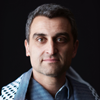

Eric Gottesman is an artist who makes images and social interventions that address themes of nationalism, migration, conflict, structural violence, colonialism, and intimate relations. Frequently engaging communities in critical self-expression, Gottesman’s projects have been shown at health conferences, in government buildings, on indigenous reserves, and in public space as well as at museums like MoMA/PS1, MFA Boston, the Cornell Museum of Fine Arts, Houston Center of Photography, MoCA Cleveland, and the Addison Gallery of American Art. Sudden Flowers, his decade-long collaborative project in Addis Ababa, Ethiopia, resulted in temporary street installations and a collective monograph. Gottesman is a Creative Capital Artist, a Fulbright Fellow, an Artadia awardee, and a co-founder of For Freedoms, an initiative for art and civic engagement that won the 2017 Infinity Award. His translation of Ethiopian writer Baalu Girma’s banned novel Oromaye was published in Hayden’s Ferry Review. He is an Assistant Professor of Art at SUNY-Purchase College.
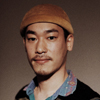

Jun Mabuchi is a Brooklyn-based administrator from Chiryu, Japan. He has been a member of For Freedoms since 2018. His role at For Freedoms as Creative Asset Manager includes overseeing exhibitions, assisting the special projects, and managing For Freedoms visual archive. Most recently, he helped execute the 2020 Awakening Billboard Campaign.
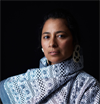

Claudia Peña serves as the Executive Director of For Freedoms which is an artist-led platform for civic engagement, discourse, and direct action for artists in the United States. She is on faculty at UCLA School of Law and in the Gender Studies department and also affiliated with the Prison Education Program which creates innovative courses that enable faculty and students to learn from, and alongside, participants who are currently incarcerated. She's a member, and also on staff, of the Guild of Future Architects which is a home, refuge, and resource for people collaboratively shaping a kind, just, inclusive, and prosperous world. Claudia is the Co-Founder of Repair, a Los Angeles-based organization focused on the health and the disabling effects of inequity, violence, exploitation. Prior to that, Claudia was the Statewide Director of the California Civil Rights Coalition (CCRC) for over five years. While there, she focused on racial justice, gender equity, voting rights, LGBTQIA+ rights, equal opportunity, progressive taxation, policies, housing rights, and coordinating ballot initiative efforts. She was previously Equal Justice Society’s Judge Constance Baker Motley Civil Rights Fellow where she researched and presented on issues of implicit bias and equal protection.


Manushka Magloire is a global strategic leader and cultural impact expert with over 10+ years of mission driven experience in both the public and private sectors. As a trusted industry voice with deep subject matter expertise, her multi-disciplinary work has delivered transformative social change programs for lifestyle and culture shifting brands and companies solving for real issues at the intersection of commerce and social justice, while fostering culturally relevant and sustainable practices. Most recently Manushka was at the helm of community engagement at AFROPUNK as the Global Director of Community & Social Impact - launching the AFROPUNK ARMY initiative that mobilized over 65,000 festival-goers across the globe as catalysts for social change in their local communities. She is currently the Campaign Director at For Freedoms, an artist-led organization that models and increases civic engagement, discourse, and direct action by building a cultural and political identity around creative civic participation.
 12:30pm-2:00pm
12:30pm-2:00pm
Nurielle creates immersive installations combining ceramics with other media, including video projection. Her work navigates the malleability of language and materials, the historic role of maker as storyteller, and the dialectics of inside and outside—the tamed and the wilderness. Nurielle’s recent work, Fable, was commissioned by the Gardiner Museum, Toronto.

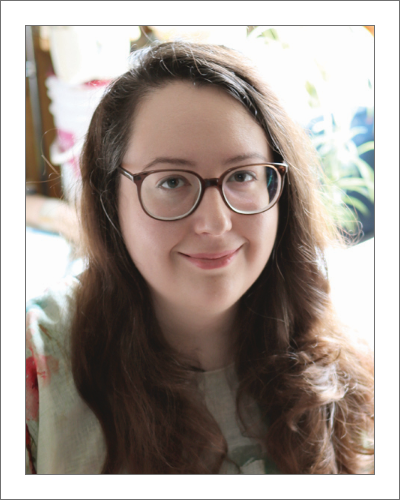
Nurielle Stern (MFA Alfred, 2014) works in sculptural ceramics. Her commissioned installation, "Fable", is on view at the Gardiner Museum, Toronto, until November 2020. Stern is the 2019 recipient of the Winifred Shantz Award for Canadian Ceramics, and is currently a resident artist at the CSULB Center for Contemporary Ceramics.

The idea of the uncanny in relation to multiplication of the female body and its link to monstrosity is an investigation into the elusive nature of identity, fluidity and the paradox of existence. Furthermore, it is a reflection of ones continually changing interior self, projected into exterior space.

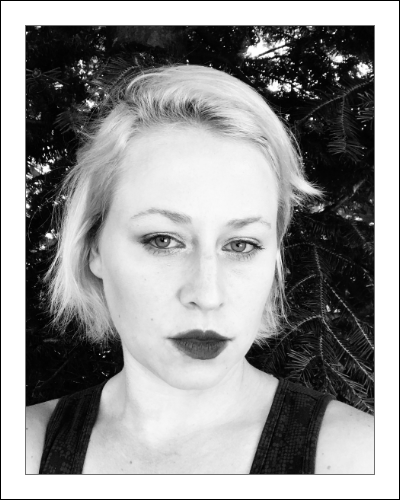
Stephanie Hanes received an MFA in ceramics from RISD and a BFA from NSCAD University. Stephanie was an invited artist at the CSULB CCC with several residencies and shows throughout North America and Europe including the c.r.e.t.a Rome Gallery and Lefebvre et Fils Gallery in Paris.

I will be taking you on a journey through my search for belonging as an immigrant artist exploring the boundaries of ceramics, and for sure, you will find out who is Sherry at the end of my lecture.

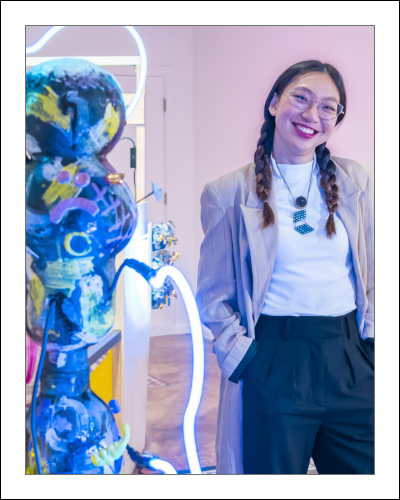
Ling Chun is a beauty school dropout from Hong Kong and transposed her passion for hair into becoming a ceramic artist. She received her MFA16’ in ceramics at the Rhode Island School of Design and completed her residency at Archie Bray afterward. She continues her studio practice at Pottery Northwest.

Here I will share my influences and process that is intertwined with my pottery. This presentation will give insight into my pots and their floral motifs which are a combination of discovery, loss, and resilience. As a potter, I reflect on my relationship with people, places, and the everyday objects as participants of sharing and coming together.

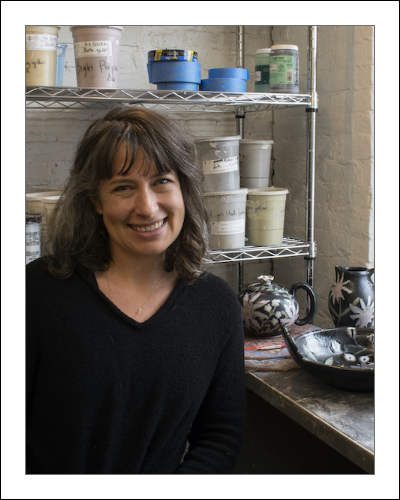
Ruth Easterbrook is a studio artist and teacher who is currently one of the artists in residence at The Clay Studio in Philadelphia. She has been the resident artist at the Harvard Ceramics Program and Anderson Ranch Art Center. Ruth earned her MFA at Alfred University (2019) and BFA at Syracuse University (2007). Her time at Penland School of Craft spring concentration (2014) and as an intern at Anderson Ranch Art Center (2015) were important for her personal growth. Her work is in various collections across the US including the Alfred Ceramics Art Museum.

I began tasking myself with creating a new hand built vessel every day. These works, when amassed, act as a type of diary or a visual record of listening to my inner voice. My works explore identity and psychological conditions through the processes of making and daily life.

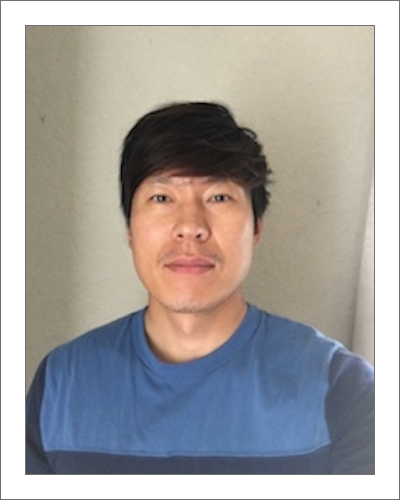
"Yeonsoo Kim was born in Haenam, South Korea. He is a long-term resident artist at Morean Center for Clay. Kim earned his Master of Fine Arts degree in Ceramics at Lamar Dodd School of Art, University of Georgia in Athens, GA."

Lu’s work explores Asian American identity and how experiences of immigration, cultural hybridity and assimilation become part of larger American culture. Through hand building, slipcasting, and incorporating found forms and other materials, she investigates how commonplace objects illuminate our values and ideas of cultural authenticity.

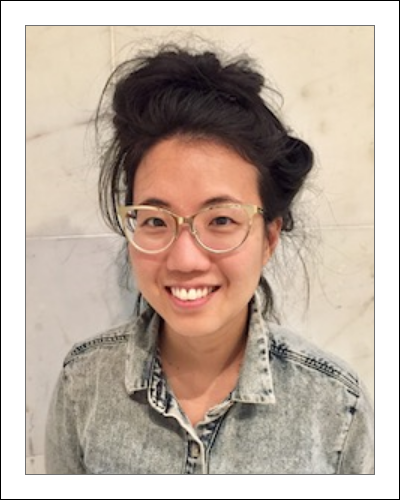
Cathy Lu is a ceramics based artist that manipulates traditional Chinese art imagery and presentation as a way to deconstruct the assumptions we have about Chinese identity and cultural authenticity. By creating ceramic based sculptures and installations, she explores what it means to be both Asian and American, while not being entirely accepted as either. Unpacking how experiences of immigration, cultural hybridity, and cultural assimilation become part of American identity is central to her work.
 2:15pm-2:45pm
2:15pm-2:45pm
The Chibok Project began in response to the kidnapping of 276 schoolgirls in Chibok, Nigeria in 2014. This presentation focuses on Art in Response to Violence, a project about world events in which violence against women and girls was a catalyst for both artmaking and social activism.

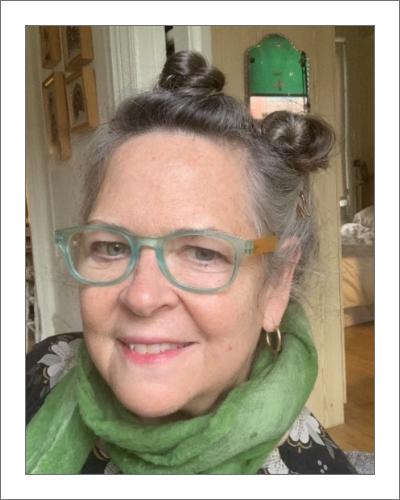
Born and raised in rural south Florida, selling mangos roadside 2/quarter. Built treehouses. Headed to NYC alone in a VWbug with a hammock and $200, age 19. Found a job. NYU art school. Made art. Found love. Made babies. Found clay. SUNY New Paltz MA. Important mentors. Still learning.
 2:15pm-3:15pm
2:15pm-3:15pm
This panel is assembled of experts who can provide answers/guidance/suggestions on problems associated with glaze and glazing. All questions regarding glaze problems are welcome: application issues, safety, fit, color, crawling, crazing, formulation, raw glaze, raw material substitution, fritted glazes and frits, firing temperature reduction, oxidation/reduction firing, wood/gas/electric firing, etc.

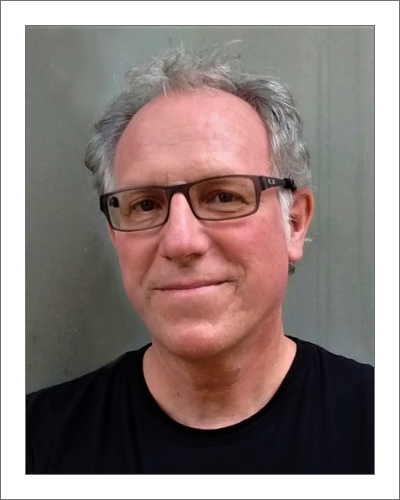
Bruce Dehnert received his MFA from Alfred University and has taught at universities in New Zealand, Malaysia, and the United States. The author of the best-selling book, “Simon Leach; Pottery Handbook,” Dehnert is a kiln designer and builder, and is a member of the International Academy of Ceramics. He currently is Head of Ceramics at Peters Valley School of Craft.

This panel is assembled of experts who can provide answers/guidance/suggestions on problems associated with glaze and glazing. All questions regarding glaze problems are welcome: application issues, safety, fit, color, crawling, crazing, formulation, raw glaze, raw material substitution, fritted glazes and frits, firing temperature reduction, oxidation/reduction firing, wood/gas/electric firing, etc.

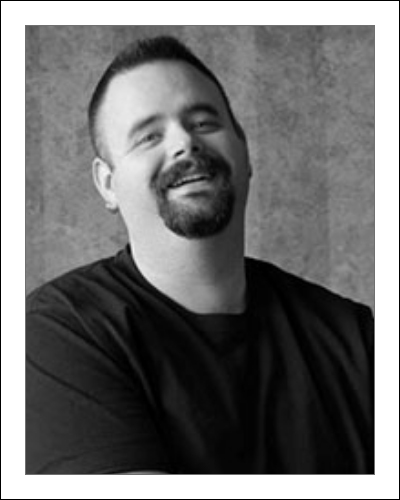
"Matthew Katz has a B.F.A. from Alfred University and a M.F.A. from The University of Colorado-Boulder. Matthew teaches ceramic materials for artists at Alfred University as well as Harvard University, The Rhode Island School of Design, The Herron School of Art, Hood College, Montana State University, and others. In his time Matt has dedicated himself to unveiling the myths and mysteries of glazes and clays."

This panel is assembled of experts who can provide answers/guidance/suggestions on problems associated with glaze and glazing. All questions regarding glaze problems are welcome: application issues, safety, fit, color, crawling, crazing, formulation, raw glaze, raw material substitution, fritted glazes and frits, firing temperature reduction, oxidation/reduction firing, wood/gas/electric firing, etc.

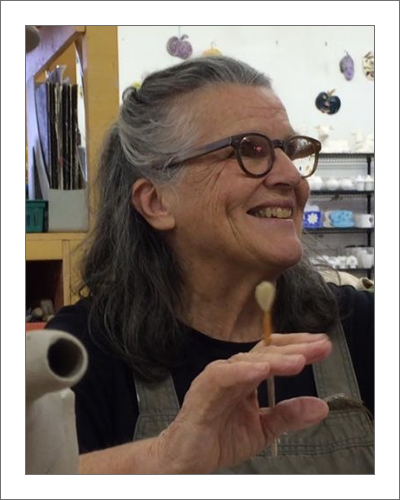
Emeritus Fellow, Australian National University School of Art and Design and Council Member, International Academy of Ceramics. She has written two best-selling books on glazes "Glazes for Australian Potters" and "More Glazes for Australian Potters", co-authored the "Handbook for Australian Potters", as well as contributing to most international ceramic journals.

This panel is assembled of experts who can provide answers/guidance/suggestions on problems associated with glaze and glazing. All questions regarding glaze problems are welcome: application issues, safety, fit, color, crawling, crazing, formulation, raw glaze, raw material substitution, fritted glazes and frits, firing temperature reduction, oxidation/reduction firing, wood/gas/electric firing, etc.

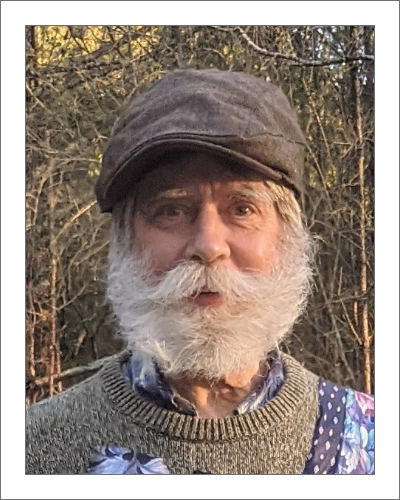
"Steve is a Professor Emeritus from JSU, AL and studio artist. He received his MFA from Alfred and BFA from U of IL. He has been awarded two, Alabama State Council on the Arts grants and a Southern Arts Federation / NEA Fellowship in Crafts. He has hosted the AL Clay Conference four times and participated with NCECA as a lecturer, panel moderator, Topical Group Discussion Leader, and Glaze DR. He conducts numerous workshops and actively exhibits his artwork. Steve recently self-published “Glazes From a Potter’s Perspective”."

This panel is assembled of experts who can provide answers/guidance/suggestions on problems associated with glaze and glazing. All questions regarding glaze problems are welcome: application issues, safety, fit, color, crawling, crazing, formulation, raw glaze, raw material substitution, fritted glazes and frits, firing temperature reduction, oxidation/reduction firing, wood/gas/electric firing, etc.
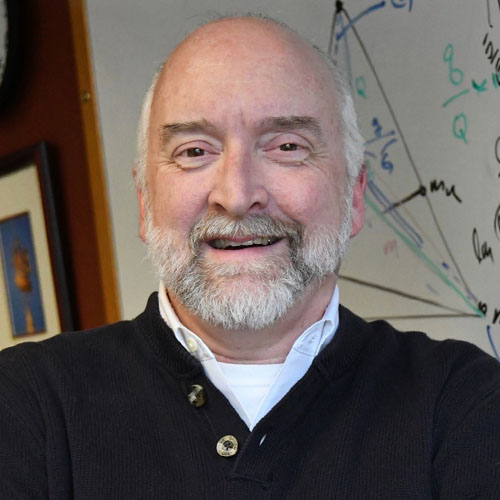

Dr. William Carty retired from Alfred University after 27 years as a Ceramic Engineering professor. He taught engineering courses and still teaches “Ceramic Science for the Artist” and industrial short courses. He is a world-recognized expert and consultant to the ceramic industry and continues to conduct research at AU.

Notkin has been creating ceramic sculpture and vessels with a political message for over five decades. Scott is an emerging ceramic artist and photographer who is currently an MFA candidate at Tyler School of Art in Philadelphia. Each will open the discussion by speaking for approximately five minutes regarding their thoughts on how art can effectively impact the social and political sensibilities of its audience. Can art be an effective tool in changing how we behave as a collective species on this planet? How do we attract an audience, and hold their attention long enough to get our message across? Can we be too blunt, too didactic, too over-the-top, or, conversely, too timid, too subtle, too oblique? These and other questions will be examined during an open discussion led by the co-leaders.

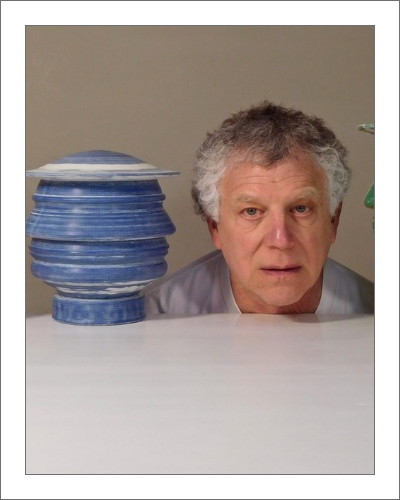
Born in Chicago, 1948, Richard Notkin received his education at the Kansas City Art Institute (BFA, 1970), and University of California/Davis (MFA, 1973). A full-time studio artist, Notkin lives in Vaughn, WA. For over five decades, he has created work in ceramic sculpture infused with progressive social and political activism.

Notkin has been creating ceramic sculpture and vessels with a political message for over five decades. Scott is an emerging ceramic artist and photographer who is currently an MFA candidate at Tyler School of Art in Philadelphia. Each will open the discussion by speaking for approximately five minutes regarding their thoughts on how art can effectively impact the social and political sensibilities of its audience. Can art be an effective tool in changing how we behave as a collective species on this planet? How do we attract an audience, and hold their attention long enough to get our message across? Can we be too blunt, too didactic, too over-the-top, or, conversely, too timid, too subtle, too oblique? These and other questions will be examined during an open discussion led by the co-leaders.

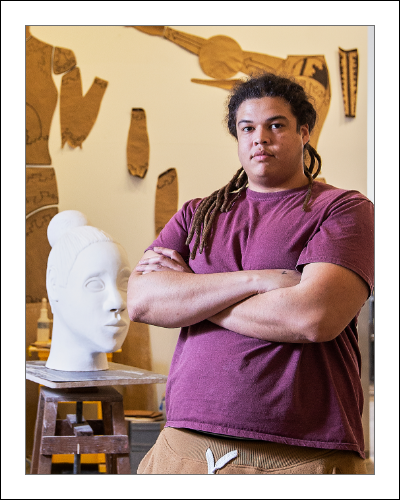
Isaac Scott is a ceramic artist, curator, photographer, and organizer from Madison, WI who is currently living in Philadelphia, PA. Isaac is an MFA candidate at Tyler School of Art and Architecture and plans to graduate in Fall of 2021. His ceramic work has been exhibited around the country including Design Miami 2020 and at the 20219 National Conference for Education in the Ceramic Arts in Minneapolis. Isaac’s photographs of the 2020 Uprising in Philadelphia were featured in the June 22ndth, 2020 issue of the New Yorker. In August of 2020 Isaac completed his first mural alongside collaborators Gerald A. Brown and Roberto Lugo. The Stay Golden mural is located at 33rd and W Diamond St. in Philadelphia, PA.
 2:15pm-4:15pm
2:15pm-4:15pm
Using a collage approach, I will work on one or two sculptures based on maps of African American farms and gardens using prefabricated leather hard components.
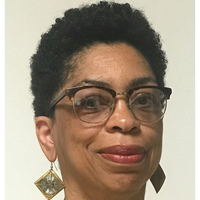
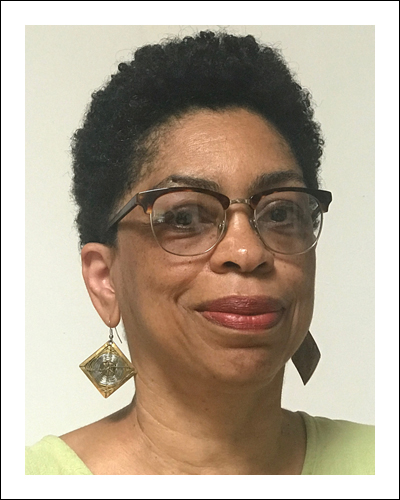
Syd Carpenter is a sculptor working primarily in clay. Her work is included in the Metropolitan Museum of Art, Renwick Gallery of the Smithsonian, Philadelphia Museum of Art, Michener Museum and the Fuller Craft Museum. She is a professor of studio art at Swarthmore College.
 3:00pm-4:00pm
3:00pm-4:00pm
Have you had seemingly spiritual experiences in the studio? Manipulating clay, a sort of primordial mud, requires mindfulness. In this session, we will discuss the connection between art making and spiritual practice.

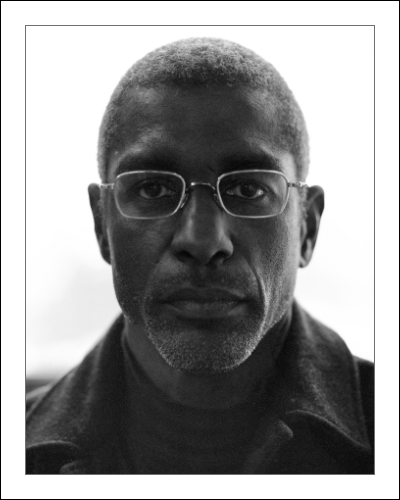
Dr. Briggs’ interest in art and spirituality began while teaching K-12 art. Creatively he makes ceramic pinch-formed vessels. Dr. Briggs is an Artist-Teacher at the Massachusetts College of Art and an Artist in Residence at the Harvard Ceramics Program. His PhD is from Penn State and his MFA from MassArt.

Have you had seemingly spiritual experiences in the studio? Manipulating clay, a sort of primordial mud, requires mindfulness. In this session, we will discuss the connection between art making and spiritual practice.

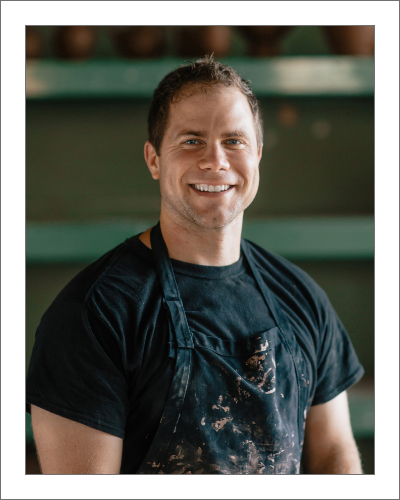
Ben Carter is a ceramic artist and educator based in Farmingdale, NJ. He received his MFA in ceramics from the University of Florida in 2010. He maintains a studio, teaches workshops and exhibits internationally. He is the creator and host of the Tales of a Red Clay Rambler podcast.

Have you had seemingly spiritual experiences in the studio? Manipulating clay, a sort of primordial mud, requires mindfulness. In this session, we will discuss the connection between art making and spiritual practice.

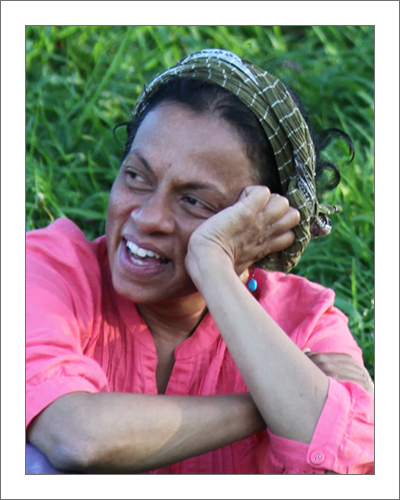
My creative practice in ceramics investigates the cultural rituals, particularly threshold rituals, undertaken by the South Asian ethnic community as a means to translate the expression of the diaspora. The ceramic installations serve as a gesture and an invitation to the broader diverse community to consider the dislocation of migrants.

Have you had seemingly spiritual experiences in the studio? Manipulating clay, a sort of primordial mud, requires mindfulness. In this session, we will discuss the connection between art making and spiritual practice.

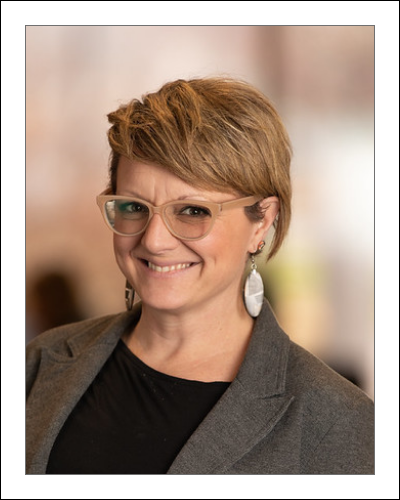
Heather Nameth Bren is a studio artist who specializes in ceramic sculpture and installation. Conceptually based, Bren explores ideas of truth and perception through her ceramic and mixed media installations. She has worked with ceramic sculpture for over twenty years and has exhibited locally, nationally and internationally. In addition to Bren's studio practice, she is an Associate Professor of Art & Design at Bethel University in Minnesota. She also serves on the executive board of trustees at Northern Clay Center in Minneapolis, MN.

Drawing from the experience of teaching at a rural community college, this presentation will explore the interesting and rewarding challenge of integrating global learning into the ceramics classroom. I will share potential approaches, highlighting my Fulbright-Hayes GPA in Kazakhstan and Uzbekistan, and how VR technology may be utilized for a more globalized learning experience.

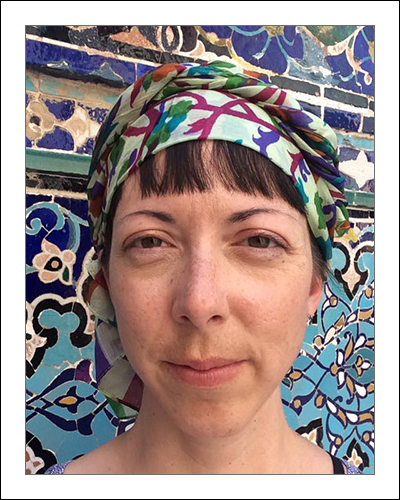
Virginia Pfau Thompson teaches Ceramics & Sculpture at Cochise College in Sierra Vista, AZ. Having studied and worked abroad in the UK, Japan, and Taiwan and traveled widely, she strives to globalize the rural community college studio art classroom. She makes good teapots and even better pots of tea.
 3:30pm-4:30pm
3:30pm-4:30pm

”Monumental: Preserving the Present” will address the preservation of thought during the age of social media in which ideas are ephemeral; as well as the role that artist play in shaping the future of public art, by discussing cultural representation in art and its influence on our collective memory.

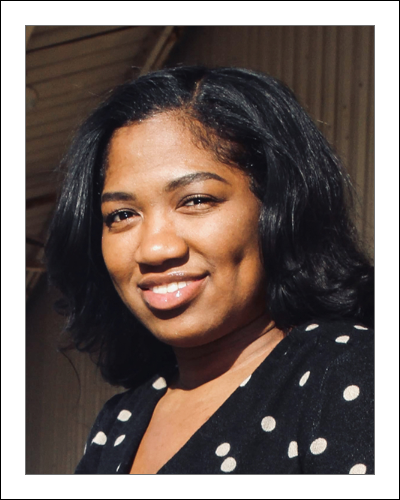
Michigan based ceramic artist and painter, Corrin Grooms’ art focuses on Black femininity, using a surreal expression to confront mental health in the Black community. She earned her BA from Saginaw Valley State University in 2018 and is an active exhibiting artist.

”Monumental: Preserving the Present” will address the preservation of thought during the age of social media in which ideas are ephemeral; as well as the role that artist play in shaping the future of public art, by discussing cultural representation in art and its influence on our collective memory.

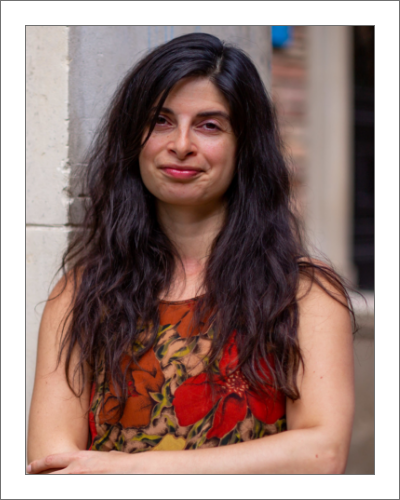
Jasmine Baetz is an artist who works with others to interrogate space, representative objects, and assumptions. She facilitated a community public art sculpture project to commemorate Los Seis de Boulder, the six Chicanx student activists who were killed in Boulder in 1974.

”Monumental: Preserving the Present” will address the preservation of thought during the age of social media in which ideas are ephemeral; as well as the role that artist play in shaping the future of public art, by discussing cultural representation in art and its influence on our collective memory.

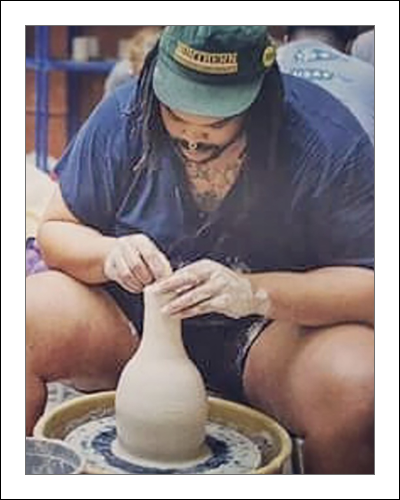
James Bester is an interdisciplinary artist whose main focus is ceramic art. His recent work focuses on the African “Nigger Jugs”, that originated in the Edgefield District of North Carolina during the 1890’s.

”Monumental: Preserving the Present” will address the preservation of thought during the age of social media in which ideas are ephemeral; as well as the role that artist play in shaping the future of public art, by discussing cultural representation in art and its influence on our collective memory.

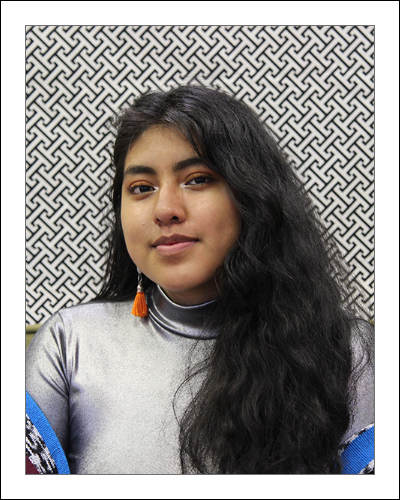
Working across ceramics, earth-based mediums, and both durational and group performance, taty hernandez examines and challenges the colonial legacies left on eurocentric understandings of knowledge production, memory, and history. Taty builds and explores narratives of collective histories and liberation-based collective futures.

”Monumental: Preserving the Present” will address the preservation of thought during the age of social media in which ideas are ephemeral; as well as the role that artist play in shaping the future of public art, by discussing cultural representation in art and its influence on our collective memory.


Isaac Scott is a ceramic artist, curator, photographer, and organizer from Madison, WI who is currently living in Philadelphia, PA. Isaac is an MFA candidate at Tyler School of Art and Architecture and plans to graduate in Fall of 2021. His ceramic work has been exhibited around the country including Design Miami 2020 and at the 20219 National Conference for Education in the Ceramic Arts in Minneapolis. Isaac’s photographs of the 2020 Uprising in Philadelphia were featured in the June 22ndth, 2020 issue of the New Yorker. In August of 2020 Isaac completed his first mural alongside collaborators Gerald A. Brown and Roberto Lugo. The Stay Golden mural is located at 33rd and W Diamond St. in Philadelphia, PA.
 4:15pm-5:15pm
4:15pm-5:15pm
We will explore the pros and cons for teaching at a small state university, discuss the fine art of the balancing between teaching, making and anything else in between as you are wanting, starting, working, or leaving a big job.

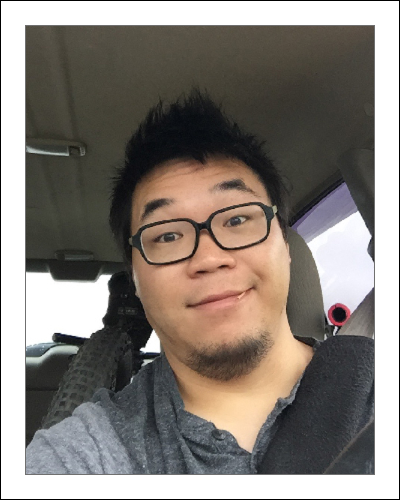
Kwok Pong Tso is currently an Assistant Professor of Art in Ceramics at Washburn University. Pong originally was born and raised in Hong Kong and decided to experience USA. In 2009 he completed his Bachelor of Fine Art from Northwest Missouri State University and completed his Master of Art and Master of Fine Art from the University of Iowa in 2013.

We will explore the pros and cons for teaching at a small state university, discuss the fine art of the balancing between teaching, making and anything else in between as you are wanting, starting, working, or leaving a big job.

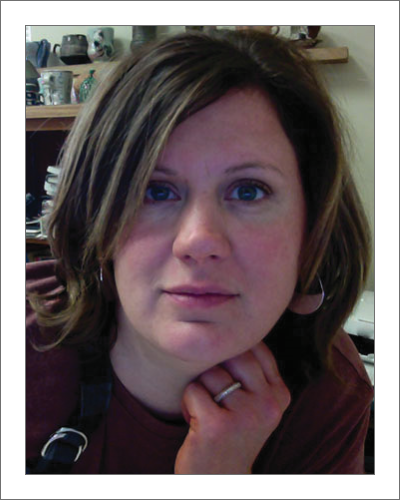
Veronica Watkins received a BFA from Northwest Missouri State University in 1996; an MFA from Southern Illinois University at Carbondale in 2000. She resides on a farm in Maryville Missouri where she takes care of her family, maintains a studio practice and is the Assistant Professor of Ceramics at Northwest Missouri State University.
 4:30pm-6:30pm
4:30pm-6:30pm
During this demonstration, Kensuke will demonstrate his hand building techniques to construct heads and full sized figure. Discussions will focus on building technique, glazing and firing methods, also how my life and back ground influenced to create my work.

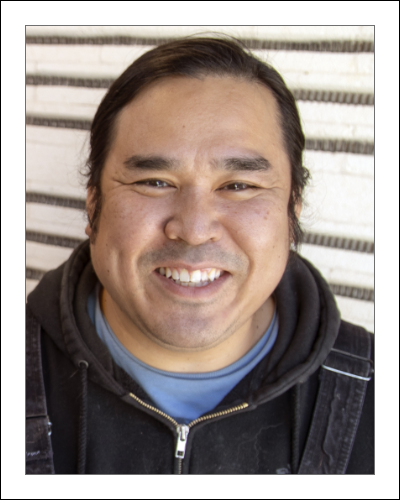
Kensuke Yamada was born in Kamakura, Kanagawa, Japan. He received his MFA from the University of Montana in 2009 and has a BA from The Evergreen State College, in Olympia, Washington. His sculptures have been exhibited throughout the USA. He is currently teaching at University of Arkansas at Little Rock.
 4:45pm-6:15pm
4:45pm-6:15pm
Disrupting the Canon highlights the work of four women whose practices take a critical look at our inherited narratives. Natalia Arbelaez, Magdolne Dykstra, Habiba El-Sayed and Heidi McKenzie celebrate women of color and the roles that they play, while also reminding us of how we have been systematically left out.

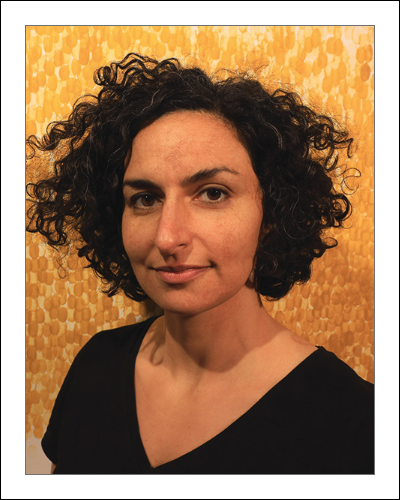
"Magdolene Dykstra is an Egyptian-Canadian artist based in St. Catharines, Ontario. She uses raw clay sculptures and installations to meditate on the multiplicity of the human race. Her research includes sublime philosophy, Abstract Expressionism, environmental concerns, and an interest in secular Buddhism. Magdolene received her MFA from Virginia Commonwealth University.

Disrupting the Canon highlights the work of four women whose practices take a critical look at our inherited narratives. Natalia Arbelaez, Magdolne Dykstra, Habiba El-Sayed and Heidi McKenzie celebrate women of color and the roles that they play, while also reminding us of how we have been systematically left out.

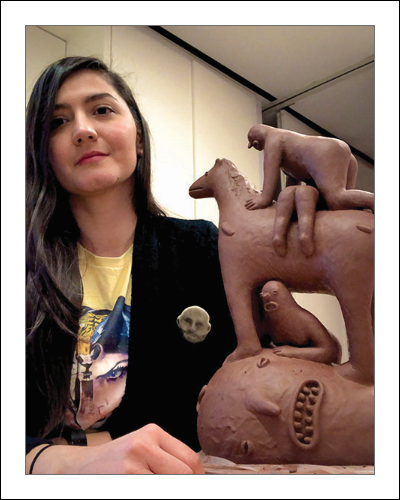
Natalia Arbelaez is a Colombian American artist, born and raised in Miami, Florida, to immigrant parents. She received her BFA from FIU and her MFA from OSU. Her work has been exhibited internationally, in museums, galleries, and included in various collections, such as the Everson Museum and MAD Museum.

Disrupting the Canon highlights the work of four women whose practices take a critical look at our inherited narratives. Natalia Arbelaez, Magdolne Dykstra, Habiba El-Sayed and Heidi McKenzie celebrate women of color and the roles that they play, while also reminding us of how we have been systematically left out.

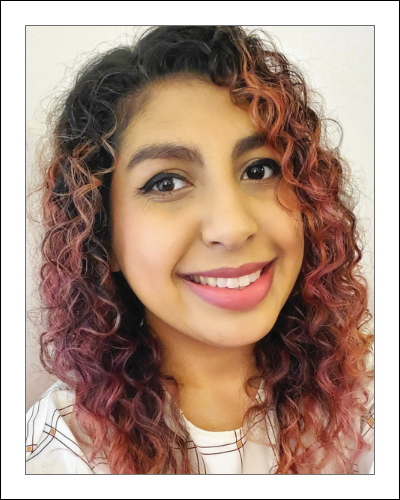
"Inspired by Islamic architecture and human vulnerability, Toronto-based artist Habiba El-Sayed holds an Advanced Diploma from Sheridan College in Ceramics (2014) and a BFA in Ceramics from the Nova Scotia College of Art and Design (2016). She recently completed a residency at the Harbourfront Centre in Toronto and her work has been shown across North America."

Disrupting the Canon highlights the work of four women whose practices take a critical look at our inherited narratives. Natalia Arbelaez, Magdolne Dykstra, Habiba El-Sayed and Heidi McKenzie celebrate women of color and the roles that they play, while also reminding us of how we have been systematically left out.

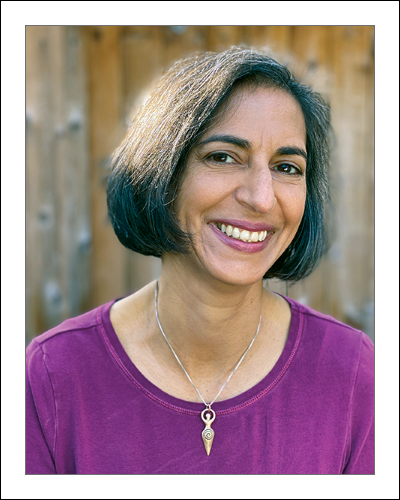
"Heidi McKenzie is a Toronto-based ceramic sculptor and potter, arts journalist and curator who is dedicated to the craft of re-invigorating modernism in our times. Inspired by her mixed Indo-Trinidadian and Irish-American ethnicity, her work addresses issues of race, identity and belonging. Her practice seeks to transcend Eurocentricism through abstraction."
 5:00pm-6:30pm
5:00pm-6:30pm
2020 Recipients
Fellow - Richard Wehrs
Honorary - Ayumi Horie
Excellence in Teaching - Joyce Michaud, Walter Ostrom, Lee Rexrode, Christopher Staley
Outstanding Achievement - Ben Carter, Simone Leigh, Louise Rosenfield
Regional Award - Michelle Erickson, Penland (Mia Hall, ED 2019), Howard Risatti
2021 Recipients
Honorary - Amy Gogarty, Janet Koplos


Description
 5:30pm-6:30pm
5:30pm-6:30pm
Koplos will draw upon her recently published book of interviews with American potters to discuss the motivations, values and practical realities of functional pottery today.

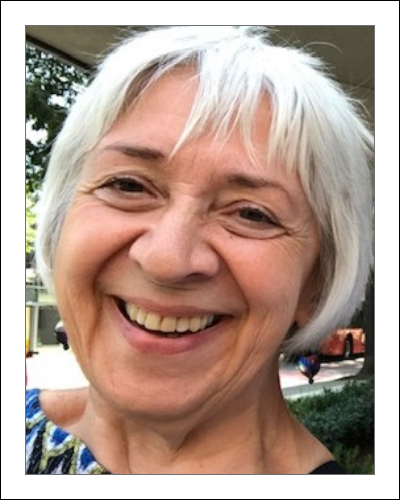
Janet Koplos is author of a book of interviews, What Makes a Potter? Functional Pottery in America Today (Schiffer Publishing, 2019). She is also co-author of Makers: A History of American Studio Craft, an honorary fellow of the American Craft Council, and a contributing editor to Art in America magazine.
 8:00pm-9:00pm
8:00pm-9:00pm
LOCS is an iterative dance performance work built within intra-group body dialogue and utilizes non traditional witnessing exchange to imagine worlds that prioritize liberative storytelling at the intersections of gender and race. In LOCS, a potent site of body-to-body contact combines hands, heads and hair, unearthing what has been woven into us.

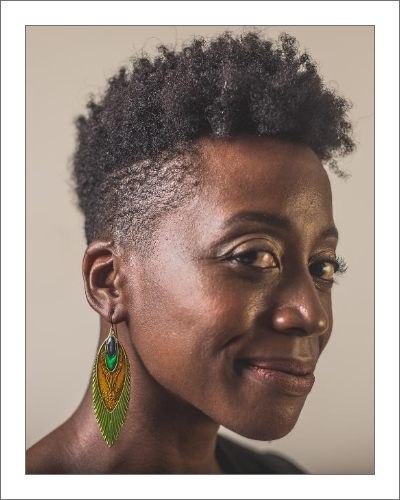
MK Adadoo, considered a "rising star" by Dance Magazine, crafts dance events that combine Africanist and post-modern vocabularies with site altering audience engagement. Abadoo is an assistant professor of Dance + Choreography and Racial Equity, Arts, and Culture at Virginia Commonwealth University’s Institute for Inclusion, Inquiry & Innovation.
 11:00am-12:00pm
11:00am-12:00pm
Reflections on the philosophies and methodologies involved in the creation of Nkyinkyim Installation by award winning Ghanaian artist Kwame Akoto-Bamfo. Kwame Akoto is known for his extreme versatility in the arts. Often ignoring and blending boundaries, Kwame reflects on the why and how he creates his work for both private collectors and museums.

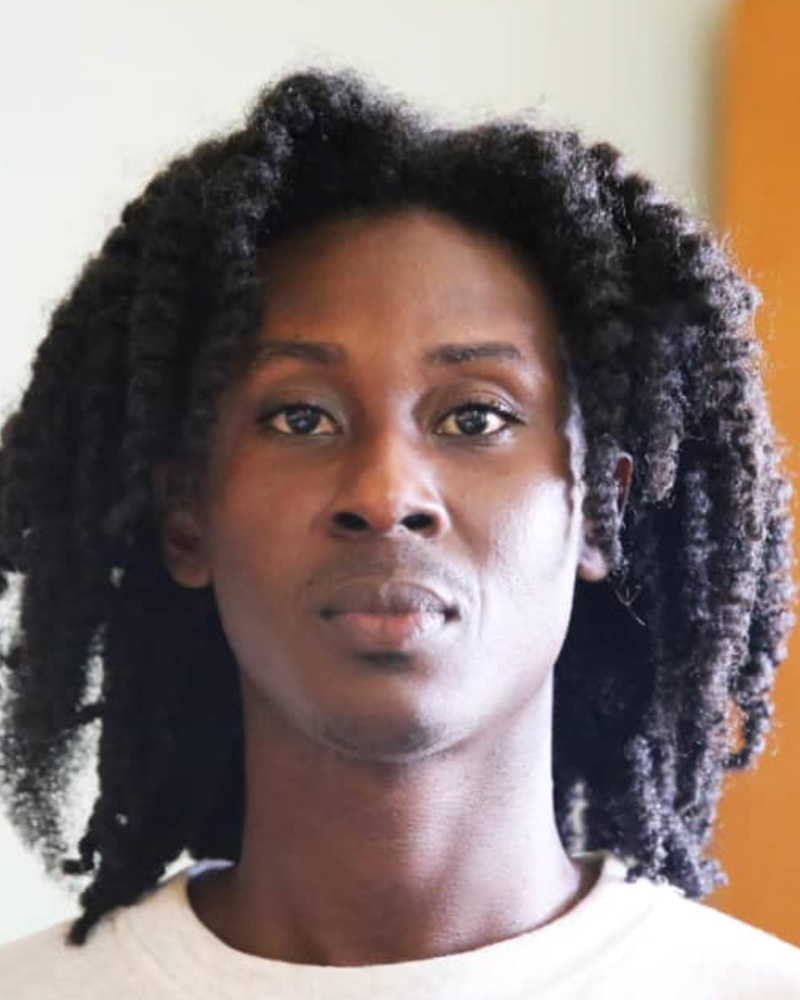
Kwame Akoto Bamfo is a Ghanaian nondisciplinary artist unbound by the artificially imposed shackles of the art world. His work is both urgent and necessary - bridging the gap between the traditional and modern and clearly illustrates what African art should become had it been modernised rather than colonised.
 12:15pm-12:45pm
12:15pm-12:45pm
In an attempt to cope with the complexities of the present and uncertainties of the future, artist Subrahmanian, explores the state of mindfulness present in traditional clay forms and earth rituals of India. She examines symbolisms, myths as well as the philosophical underpinnings of clay/earth in traditional and contemporary context.

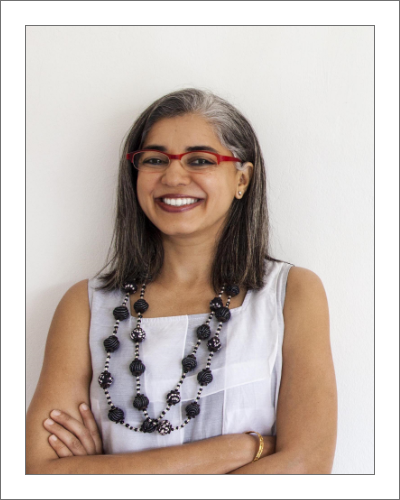
Artist, curator, writer, Madhvi Subrahmanian lives and works between India and Singapore. She is the founder member and on the curatorial team of the Indian Ceramics Triennale. Her sculptures are in several private and public collections in India, Singapore, China and Japan. Madhvi shows with Gallery Chemould in Mumbai, India.
 12:15pm-1:15pm
12:15pm-1:15pm
The benefits of Community Engaged Learning are well documented and a natural fit in ceramic curriculum. Students become engaged citizens, their democratic values and civic responsibility strengthened. This lecture focuses on the development of virtual course content as necessitated by COVID-19, and how two clay-based, historically in-person fundraisers were pulled off despite the odds.

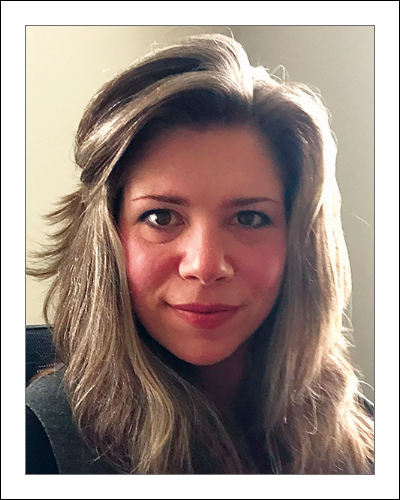
Bethany Benson holds an M.F.A. in Ceramics from the University of Southern Illinois, Carbondale, IL and a B.F.A. from the University of Massachusetts, Dartmouth, MA. She is Professor of Art and Chair of the Art and Art History Department at Juniata College in Huntingdon, PA.

The benefits of Community Engaged Learning are well documented and a natural fit in ceramic curriculum. Students become engaged citizens, their democratic values and civic responsibility strengthened. This lecture focuses on the development of virtual course content as necessitated by COVID-19, and how two clay-based, historically in-person fundraisers were pulled off despite the odds.

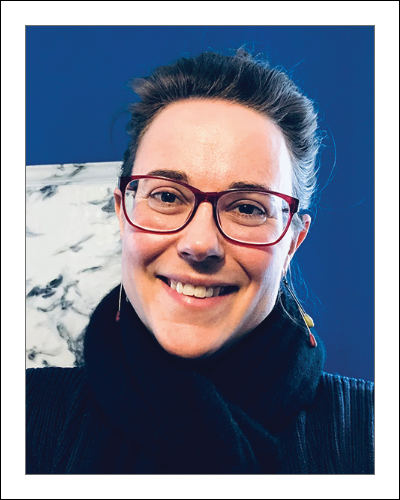
I am an Associate Professor of Art at Hartwick College, Oneonta, NY where I teach and make ceramics. I have an M.F.A in ceramics and craft history from NSCAD University in Halifax, Nova Scotia, Canada and a B.F.A from Alfred University in Alfred, New York.

How do you use your ceramic 3D printing skills? In this presentation, Leung will share her experience using ceramic 3D printing as a tool to unite people across disciplines and countries, through a teaching assistantship with her professor, Anna Calluori Holcombe, at the College of Design, of the Jingdezhen Ceramic Institute, in China.

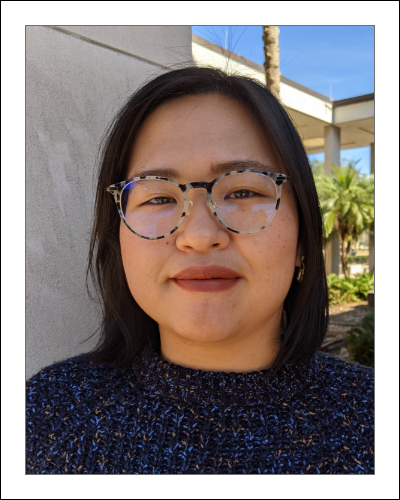
Cindy Leung received her BFA from Queens College and is an MFA candidate at the University of Florida. Her work has been included in exhibitions at the Clay Art Center and the Morean Arts Center. Leung was awarded a 3D ceramic printing teaching assistantship at Jingdezhen Ceramic Institute in China.
 12:15pm-2:15pm
12:15pm-2:15pm

Lindsay will focus on pottery forms constructed from thrown and hand-built elements. Pieces are altered, combined, and stacked with added feet and exaggerated necks, creating vases, pitchers and candlesticks with anthropomorphic qualities.

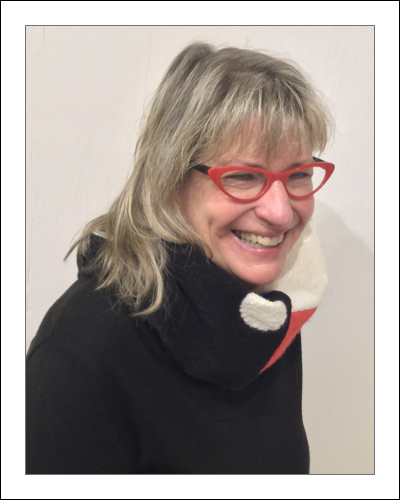
Suze Lindsay is a studio potter living and working in the NC mountains. Her ceramic studies include a two-year CORE fellowship at Penland School of Crafts, followed by earning an MFA from Louisiana State University. She holds two educational degrees, one in special education and the other in Montessori teaching theory. After completing three years as an artist in residence at Penland, Suze and her husband, Kent McLaughlin set up and began potting in their studio in Bakersville, NC under the name Fork Mountain Pottery.
 1:00pm-2:00pm
1:00pm-2:00pm
Take part in this lively discussion generated from the varied perspectives of founding representatives of four international arts programs. These panel participants, operating outside of academic norms, are free to design programs in innovative subjects that integrate socio-environmental concerns with the arts.

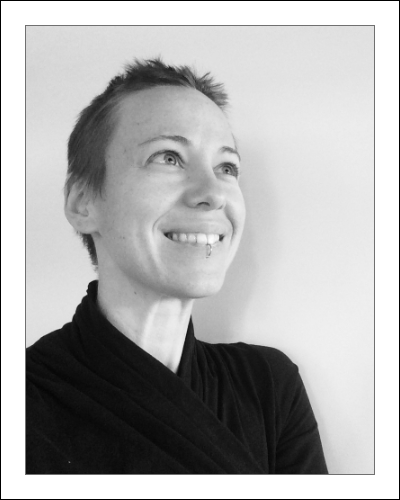
Michele is the founder and executive director of Craigardan, an interdisciplinary residency center in the Adirondacks of New York. Craigardan’s place-based focus on arts and agriculture led to her strong interest in systems change, particularly food systems, and to her reliance on the power of collective creativity for good.

Take part in this lively discussion generated from the varied perspectives of founding representatives of four international arts programs. These panel participants, operating outside of academic norms, are free to design programs in innovative subjects that integrate socio-environmental concerns with the arts.

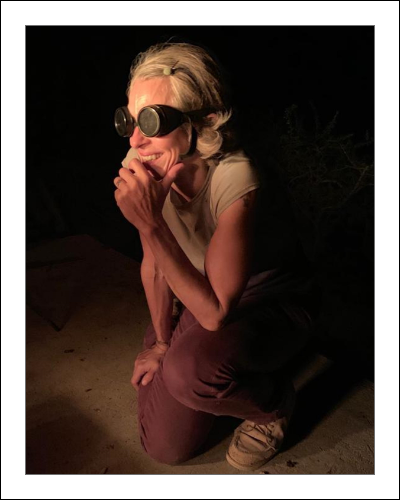
Penn State (BA); Indiana University (MFA). Christa Assad maintained a ceramics studio for 17 years in the San Francisco Bay Area, has traveled the world in pursuit of pottery — yet nowhere stokes her senses like Baja Sur California, Mexico, where she now resides with the co-founder of "Taller de Terreno," Kevin Wickham.

Take part in this lively discussion generated from the varied perspectives of founding representatives of four international arts programs. These panel participants, operating outside of academic norms, are free to design programs in innovative subjects that integrate socio-environmental concerns with the arts.

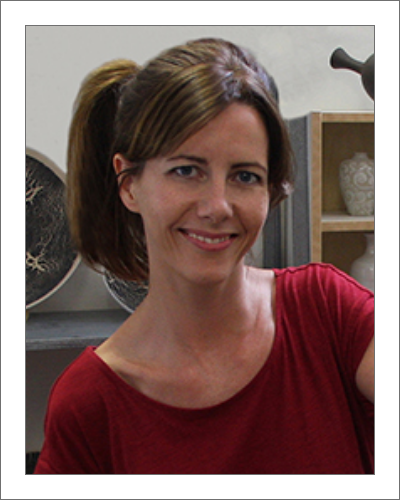
Corrie Bain is a ceramic sculptor from the UK. She studied Ceramics and Applied Arts at Edinburgh College of Art and Alfred University. As a member of the International Academy of Ceramics, she exhibits her work worldwide. She owns an International Ceramics School in Barcelona, where she runs 3-month intensive courses, and artists residencies.

Take part in this lively discussion generated from the varied perspectives of founding representatives of four international arts programs. These panel participants, operating outside of academic norms, are free to design programs in innovative subjects that integrate socio-environmental concerns with the arts.

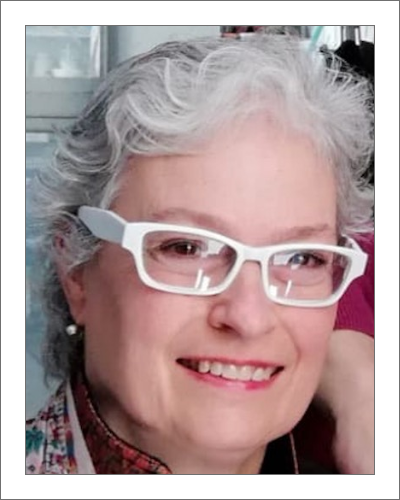
Lori-Ann Touchette is an art historian/archaeologist. In Rome since 1997, she currently teaches for the School of Visual Arts Rome Program. Author/editor of books and articles on Greek and Roman art, the 18th - century Grand Tour, historical and contemporary ceramics. In 2012, she co-founded C.R.E.T.A. Rome with Italian artist Paolo Porelli.
 1:30pm-2:30pm
1:30pm-2:30pm
This discussion addresses divisions that many ceramicists perceive in their practice that stem from wider issues in society, politics, Fine Art and academe. Five ceramic artists of diverse background will speak about their perspectives on gaining recognition, acceptance, and understanding through their own work and approaching the wider clay community.

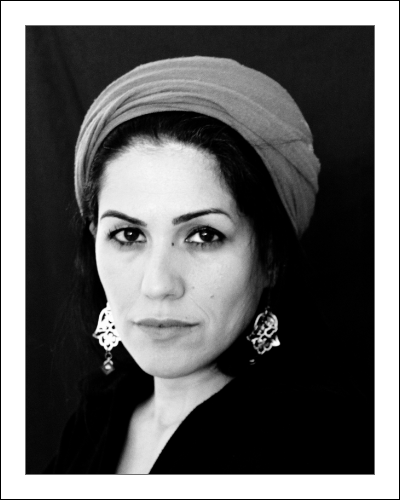
Filsoofi is a multi-disciplinary artist and in her work she utilizes ancient and contemporary art media – ceramics, poetry, ambient sound and video – to address issues regarding human condition from a personal perspective. Filsoofi is Assistant Professor of Ceramics at Vanderbilt University in the Department of Art.

This discussion addresses divisions that many ceramicists perceive in their practice that stem from wider issues in society, politics, Fine Art and academe. Five ceramic artists of diverse background will speak about their perspectives on gaining recognition, acceptance, and understanding through their own work and approaching the wider clay community.


Dr. Briggs’ interest in art and spirituality began while teaching K-12 art. Creatively he makes ceramic pinch-formed vessels. Dr. Briggs is an Artist-Teacher at the Massachusetts College of Art and an Artist in Residence at the Harvard Ceramics Program. His PhD is from Penn State and his MFA from MassArt.

This discussion addresses divisions that many ceramicists perceive in their practice that stem from wider issues in society, politics, Fine Art and academe. Five ceramic artists of diverse background will speak about their perspectives on gaining recognition, acceptance, and understanding through their own work and approaching the wider clay community.

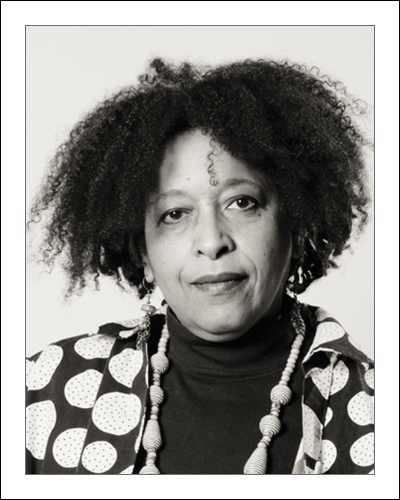
As a full time self employed ceramic artist in Cleveland, Ohio, Angelica Pozo divides her time between public art commissions, studio work, writing how to books, teaching ceramic workshops, and artist teaching in K-12 schools, often serving as an artist-in-residence on large participatory tile/mosaic projects in school and community settings.

This discussion addresses divisions that many ceramicists perceive in their practice that stem from wider issues in society, politics, Fine Art and academe. Five ceramic artists of diverse background will speak about their perspectives on gaining recognition, acceptance, and understanding through their own work and approaching the wider clay community.

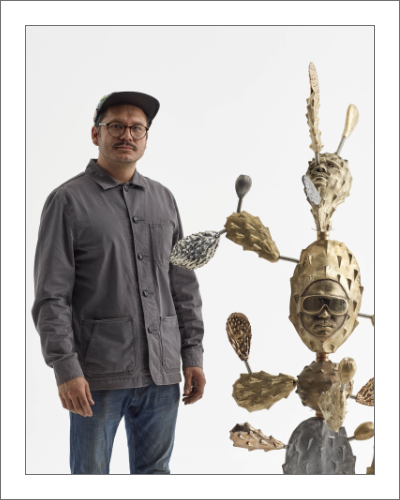
Salvador Jiménez-Flores is an interdisciplinary artist born in México. In his work he explores the themes of colonization, migration, “the other,” stereotypes, and futurism. Jiménez-Flores served as Artist-In-Residence for the city of Boston, Harvard Ceramics Program, Office of the Arts at Harvard University, and Kohler Arts Industry. Jiménez-Flores is a recipient of Joan Mitchell Foundation Painters & Sculptors Grants and The New England Foundation for the Arts, and Threewalls’ RaD Lab+Outside the Walls Fellowship Grant. He is an Assistant Professor in ceramics at the School of the Art Institute of Chicago.

This discussion addresses divisions that many ceramicists perceive in their practice that stem from wider issues in society, politics, Fine Art and academe. Five ceramic artists of diverse background will speak about their perspectives on gaining recognition, acceptance, and understanding through their own work and approaching the wider clay community.

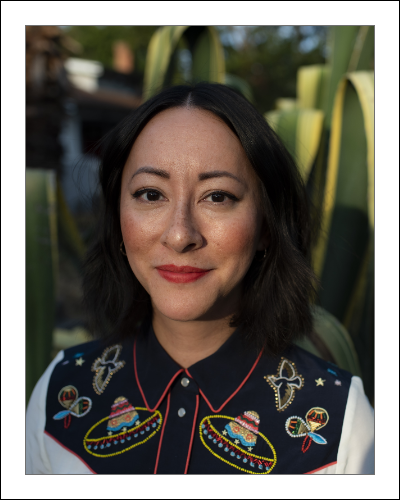
Jennifer Ling Datchuk is an artist born in Warren, Ohio and raised in Brooklyn, New York. Her mother came to this country in the early 1970s from China; her father born and raised in Ohio to Russian and Irish immigrant parents. Beyond initial appearances, the layers of her parents’ past and present histories are extremely overwhelming and complicated – a history of conflict she has inherited and a perpetual source for her work. Trained and educated traditionally in ceramics, her practice evolved from sculpture to mixed media as she began to focus on domestic objects and the feminine sphere. Handwork and hair both became totems of the small rituals that fix, smooth over, and ground women’s lives. Through these materials, she explores how Western beauty standards influenced the East, how the non-white body is commodified and sold, and how women’s – globally, girls’ – work is still a major economic driver whose workers still struggle for equality. She explores the global migrations of beauty, material culture, intersectionality, labor, identity, and personal history. She holds an MFA in Artisanry from the University of Massachusetts Dartmouth and a BFA in Crafts from Kent State University. She has received grants from the Artist Foundation of San Antonio, travel grant from Artpace, and the Linda Lighton International Artist Exchange Program to research the global migrations of porcelain and blue and white pattern decoration. She was awarded a residency through the Blue Star Contemporary Art Museum to conduct her studio practice at the Künstlerhaus Bethanien in Berlin, Germany and has participated in residencies at the Pottery Workshop in Jingdezhen, China, Vermont Studio Center, European Ceramic Work Center in the Netherlands and Artpace in San Antonio, Texas. In 2017, she received the Emerging Voices award from the American Craft Council and was named a United States Artist 2020 Fellow in Craft. She is an Assistant Professor of Ceramics at Texas State University and lives and maintains a studio practice in San Antonio, Texas.

I will demonstrate how to produce and apply a perfect terra sigillata, work decoration with raw terra sigillata, masking tapes, brush work, raw egg and low-fat milk will be demonstrated. Firing techniques in an electric kiln, kitchen stove or newspaper will be discussed to produce a surprising result.
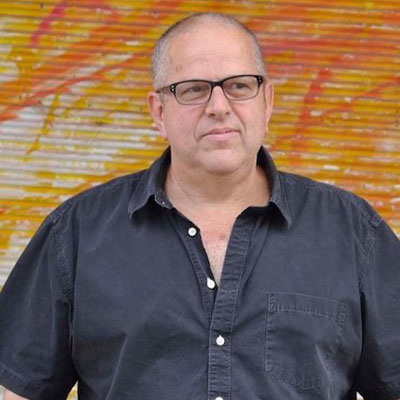

Shamai Sam Gibsh educated in the USA and Israel. A member of the International Academy of Ceramics. Gives multiple workshops in his unique alternative firing techniques all over the world. Participates in many residencies, exhibitions. His art is in collections of multiple Museums & features in Galleries, magazines, books and publications.
 2:15pm-3:15pm
2:15pm-3:15pm
Contemporary ceramics in Ghana are vibrant and vital, though critically underrepresented in the international dialogue. This discussion will include participants from Ghana and the United States, and cover a range of topics, including cross-cultural exchange, challenges faced by ceramic artists in West Africa, tradition versus contemporaneity, ceramics in academia, and the experiences of a Fulbright scholar.

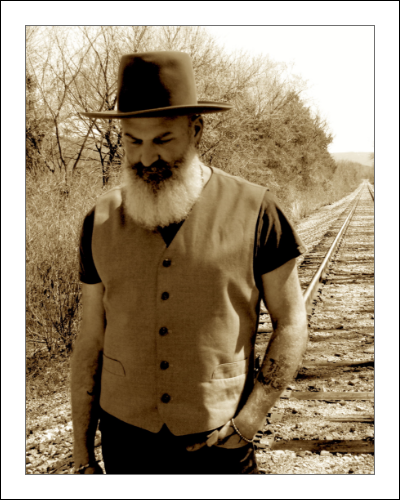
Adam Posnak (b. 1973) grew up in Macon, Georgia. His great- grandfathers were blacksmiths, his grandfather a woodworker, and his mother is a studio potter. Posnak holds an MFA from Louisiana State University, Baton Rouge, and a BA from Macalester College, St. Paul, MN. Posnak is an Instructor of Ceramics and Foundations at the University of Arkansas, Fayetteville.

Contemporary ceramics in Ghana are vibrant and vital, though critically underrepresented in the international dialogue. This discussion will include participants from Ghana and the United States, and cover a range of topics, including cross-cultural exchange, challenges faced by ceramic artists in West Africa, tradition versus contemporaneity, ceramics in academia, and the experiences of a Fulbright scholar.

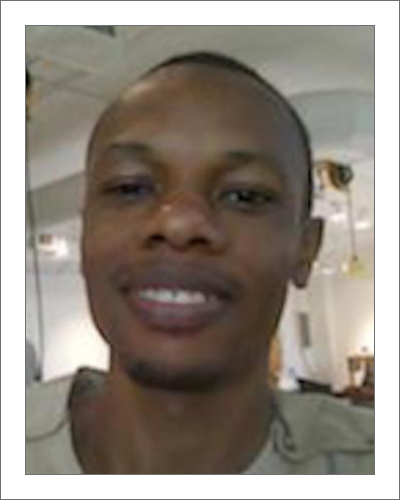
Eric Andre was born and raised in Akomadan, the Northern part of Ashanti Region, Ghana, and is currently MFA Student in Ceramics, School of Art, the University of Arkansas. Eric's work is concerned with interior and exterior decor focusing on conceptual sculpture pieces and mixed-media artifacts.

Contemporary ceramics in Ghana are vibrant and vital, though critically underrepresented in the international dialogue. This discussion will include participants from Ghana and the United States, and cover a range of topics, including cross-cultural exchange, challenges faced by ceramic artists in West Africa, tradition versus contemporaneity, ceramics in academia, and the experiences of a Fulbright scholar.

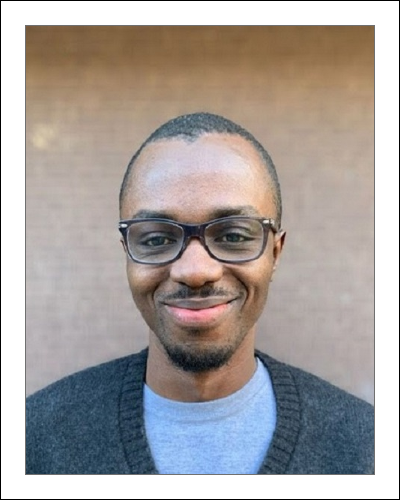
Japheth Taah Asiedu-Kwarteng (b. April 4, 1987, Ghana) is an MFA candidate at Illinois State University and former Principal Technician at KNUST Ceramics, Ghana. As an artist, Japheth produces works (largely inspired by traditional Ghanaian symbolism) that address social issues within the rich Ghanaian cultural and traditional values.

Contemporary ceramics in Ghana are vibrant and vital, though critically underrepresented in the international dialogue. This discussion will include participants from Ghana and the United States, and cover a range of topics, including cross-cultural exchange, challenges faced by ceramic artists in West Africa, tradition versus contemporaneity, ceramics in academia, and the experiences of a Fulbright scholar.

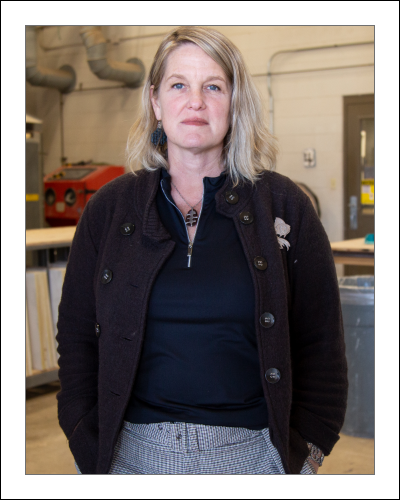
Professor Jeannie Hulen is Associate Dean in the J. William Fulbright College of Arts and Sciences at the University of Arkansas. She currently has ongoing research in West Africa following her 2018-2019 US Fulbright Scholar post at the Kwame Nkrumah University of Science and Technology in Kumasi, Ghana.

Contemporary ceramics in Ghana are vibrant and vital, though critically underrepresented in the international dialogue. This discussion will include participants from Ghana and the United States, and cover a range of topics, including cross-cultural exchange, challenges faced by ceramic artists in West Africa, tradition versus contemporaneity, ceramics in academia, and the experiences of a Fulbright scholar.

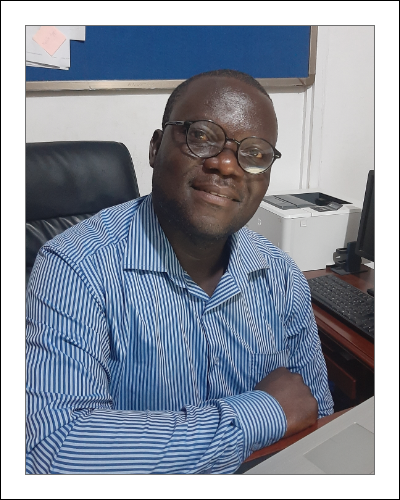
Samuel Nortey is Senior Lecturer and a practicing Ceramicist. He has researched widely on developing the frontiers of pottery production and contemporary art issues in Ghana. Nortey holds a PhD in African Art and Culture and has participated in a number of conferences and group exhibitions.
 2:45pm-3:45pm
2:45pm-3:45pm
Jean-Pierre Larocque’s ceramics and drawings seek to play with shadows-metaphorically speaking, the blurred edges of human experience, where the physical meets the psychological, that vulnerable treshold where the mind threatens to come unravelled. We see semi-transparent heads, figures, and horses in a state of transformation - primeval in their power and essence, much like cave paintings: elusive and ghost-like. The highly charged textures and complex supporting structures gives his work an apparently unfinished or open-ended presence.

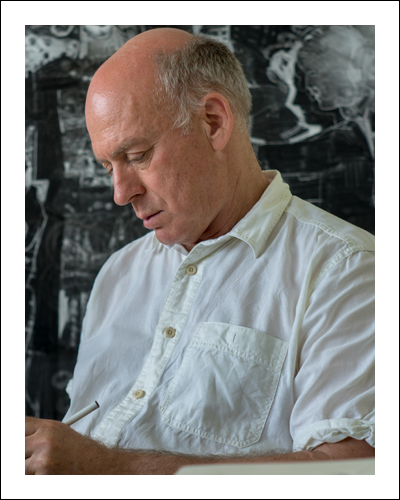
Jean-Pierre Larocque. Montreal, Canada 1953. MFA Alfred (1988). Teaching: California State at Long Beach, Alfred, Athens GA, University of Michigan, Emily Carr BC. Retired from Concordia U in 2017. The Gardiner Museum presented Ceramics and Drawings in 2006. A 2019 retrospective at The 1700 LaPoste was accompanied by an hour long documentary.

Building on the ideas of Nelson Goodman and Susanne Langer, I describe and apply a “grammatical” approach to the analysis, appreciation and critique of functional ceramics. I emphasize the multi-sensory and interactive valences of functional work, moving beyond a conception of art as something to be viewed from a distance.

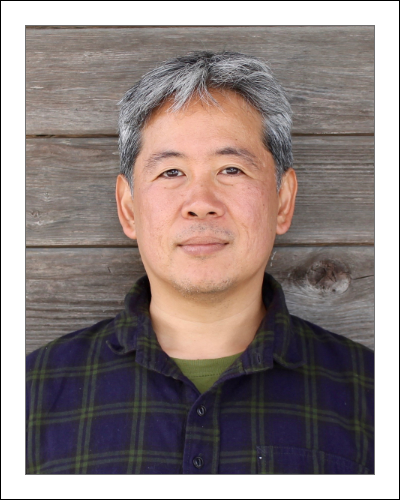
Hideo Mabuchi teaches and conducts research as a Professor of Applied Physics at Stanford University. In the studio he focuses on thrown-and-altered vessel forms for atmospheric firings. He is working on new teaching approaches that integrate ceramics with scientific and humanistic studies to bring craft into the core of liberal undergraduate education.
 2:30pm-4:30pm
2:30pm-4:30pm
Wyandot artist will be demonstrating an ancient SW method of handbuilding using only small long hand rolled coils. He will be sharing thoughts, stories, life experiences, about reviving ancient arts and reawakening techniques of his own ancestors while helping in revitalization of ancient pottery techniques for other indigenous peoples.

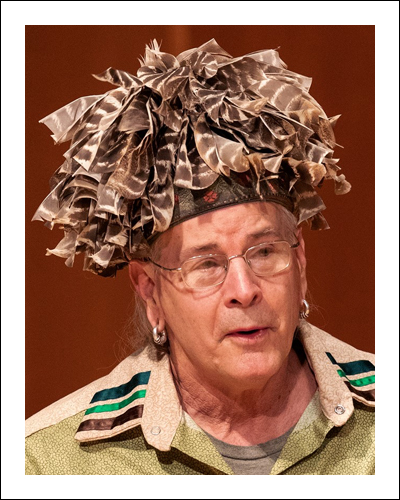
Born in 1955, raised in Missouri, Richard grew up in a spiritual creative home where artistic expression was cultivated by scattered pencils and paper on the coffee table in the evenings while his parents read stories to the five children. His mother always encouraged all of them to be proud of their rich Wyandot heritage. Richard’s been a self-employed full time ceramic artist since 1984. He’s active in Wyandot/Wendat language and culture revitalization, longhouse ceremonies, and spent seven years teaching Wyandot language and storytelling in the Wyandotte public schools. He is continually holding pottery workshops for First Nations peoples including Wyandot, Seneca/Cayuga, Mi’kmaq, Shawnee, Oneida, and Wendat and Innu in Canada. He enjoys telling Wyandot stories to children and passing on what he’s learned, in bow making, rattle making and other indigenous art forms that tie people to their ancestors. He’s been fortunate to be invited to New Zealand for three different indigenous artists gatherings and cherishes those inspiring gatherings with those of similar passion. A dream of his is to see all indigenous art traditions restored. Richard says ”I believe all artists are stronger when they're grounded in their own ancestral art forms first.” Though he will not compete in Art Competitions, He has work in many major museums across the country, and in a number of books and publications. Richard was nominated and honored with a First Peoples Fund Community Spirit Award for storytelling and voluntary service to his Native American community. Richard is an enrolled member of the Wyandot Nation of Kansas (not federally recognized) and a IACB certified Indian Artisan.
 4:00pm-4:30pm
4:00pm-4:30pm
Including goats in a ceramics class increases mindfulness and is a double-shot of therapy. In this lecture, artist and professor WangLing Chou will discuss the benefits and the evolution of goat ceramics in her classroom.

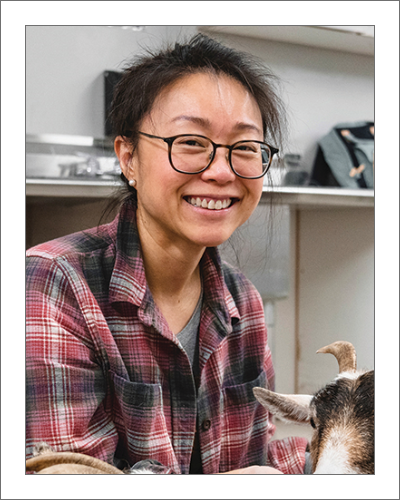
Living on a small farm in Central Louisiana, WangLing Chou is a Professor of Art at Louisiana College. Chou uses animal imagery as well as live animals in both her artwork and in her teaching. Most recently, Chou is exploring the benefits of goats being present in the ceramics studio.
 3:30pm-4:30pm
3:30pm-4:30pm
In the wide spectrum of socially engaged art work, collaborations are always occurring between the originating artist/s, the community, and viewers participating in the projects. Let’s have a conversation about these different types of collaboration and people’s experiences in developing these projects and relationships and seeing them to fruition.

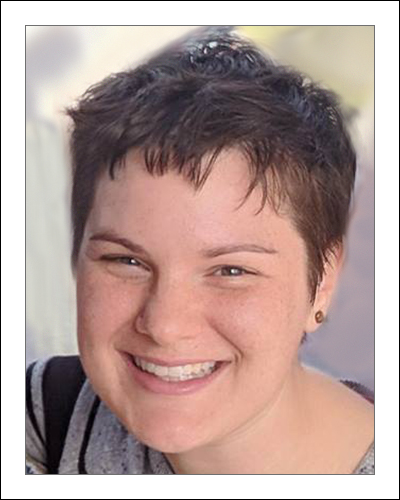
Lauren Duffy received her MFA from Indiana University and is an Assistant Professor of Art at Northland College on Lake Superior in Ashland Wisconsin. She has a socially engaged, community driven art practice involving creating collaborative, multi-media portraits of individuals and the groups of which they are a part.
 4:00pm-5:00pm
4:00pm-5:00pm
As archivist for the College of Ceramics Archives, I started saying to myself (and others) what do we need to start collecting now for the questions that come 100 years from now? I want to share my joy in finding the answer as well as my fears that we won’t.
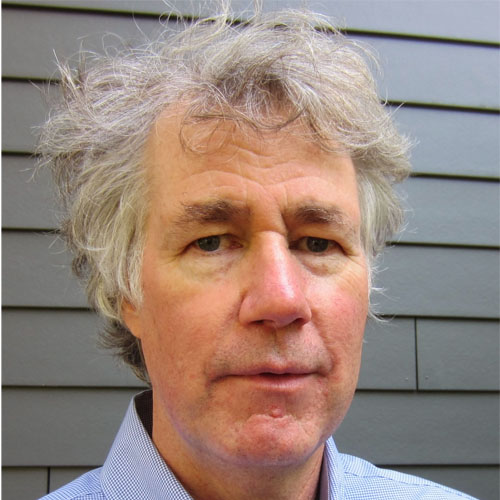

John Hosford is Art Librarian at Samuel R. Scholes Library of Ceramics at Alfred University. His main responsibilities are library instruction and managing the archives at the New York State College of Ceramics. He received his MLS from University at Buffalo in 2012. He is Also a Captain in the Alfred Fire Department.

THE SHARD PROJECT is an interactive, community-based, environmental art project and exhibition that utilizes handmade ceramic shards, intended to last thousands of years, which tell the story of the current global climate crisis, and stimulate conversation and action around climate and justice issues.

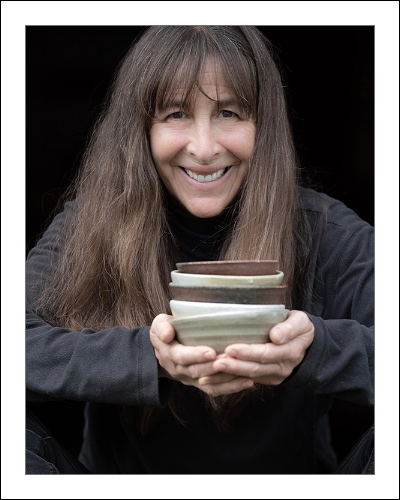
Vermont-based ceramic artist Lauryn Axelrod’s work has been featured in numerous exhibitions, tea rooms and restaurants around the globe. In 2019, she created The Shard Project as a community-based project to stimulate conversation around issues of climate change and to help communities develop creative solutions to address problems.

Last spring, I designed a project that intermingled college students from graphic design and ceramics to create a truly interdisciplinary collaborative project. The goal – to have students understand diverse mediums through immersion in their peer’s discipline.The short presentation will focus on the results of the student’s collaborative efforts.

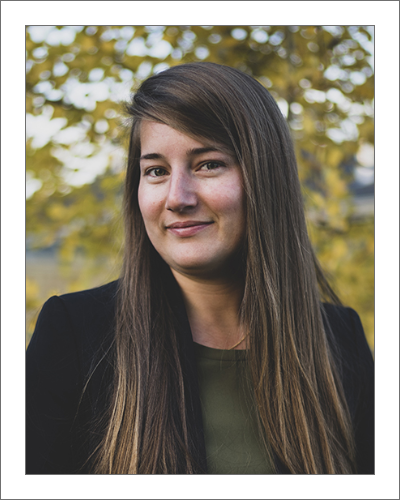
Ashley Fuchs is a designer and Assistant Professor at Montana State University. Currently she is exploring conceptual work and pedagogy in letterpress printing. Fuchs seeks out and experiments with new materials, mediums, and various fabrication techniques. This translates to her teaching philosophy which emphasizes interdisciplinary making through collaboration.

My presentation will review my project, “Portraits of a Place.” This project is all about creating portraits of individuals and their community through personal collaboration and objects. It is a type of radical redefinition of self and group by co-authoring portraits based on words and passions rather than appearance.


Lauren Duffy received her MFA from Indiana University and is an Assistant Professor of Art at Northland College on Lake Superior in Ashland Wisconsin. She has a socially engaged, community driven art practice involving creating collaborative, multi-media portraits of individuals and the groups of which they are a part.
 4:45pm-5:45pm
4:45pm-5:45pm
There are numerous technical challenges involved with using hand processes to create exceptional functional objects in clay, particularly when using porcelain. Mike will demonstrate techniques used in his ceramic process and discuss key elements of designing multicomponent forms and planning for the use of various ornamental techniques.

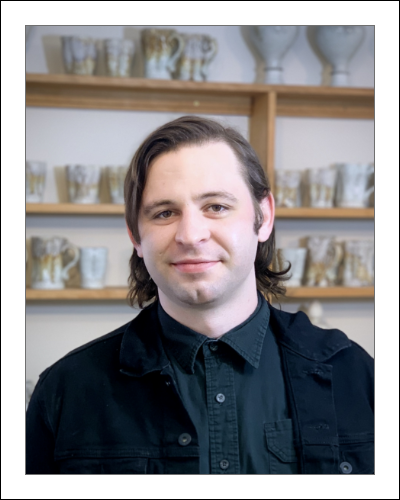
Stumbras was born in Chicago, Illinois. He studied at St. Olaf College, where he received a BFA and a BS in 2007. Stumbras received an MFA in Ceramics from Louisiana State University in 2017. Stumbras has exhibited work nationally and internationally. He is currently living and working in Kansas City.

Jun Kaneko migrated as a young man from Japan into the midst of a California art scene during which ceramics art as we knew it was being reinvented. Mary Davis McNaughton characterized this era as "Clay’s Tectonic Shift”. Mentored by Voulkos, Soldner, Mason, and other key figures of the time, Kaneko’s vision has been noted for the ways in which his native cultural sensibilities intermixed with western expressionist and conceptual frameworks. Over time, his work has evolved through an array of materials, cultures, and genres ranging from ancient methodologies to cutting edge factories, in the US, Europe, Asia, and Mexico and his most resent exploration into Raku with artist Juan Sanchez in Cuernavaca, Mexico. The lecture will present Jun Kaneko’s "no-limitation" attitude towards the media of clay.

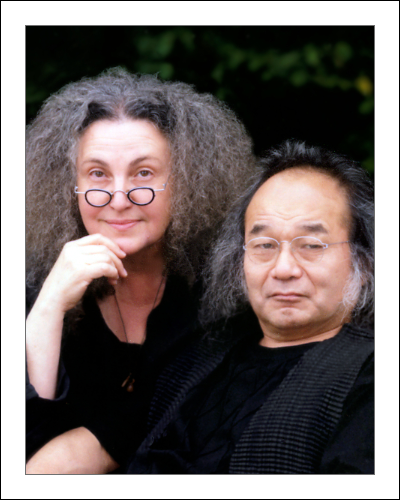
For the last 48 years, I have been involved in supporting the arts. These efforts have been fo-cused on the creative art making process. My objectives have been to support artists by devel-oping & providing studios, stipends & exhibitions opportunities while fostering critical dialog re-views. My goal is to provide the support & freedom to make things happen, to do something new.
 5:00pm-5:30pm
5:00pm-5:30pm
This presentation is about process, the steps taken to create a collection of 5 ceramic objects having a Brazilian bird nest (Guaxu) as a visual and structure reference. The nest as a language, the local clay as color, wabi-sabi values and wood firing working together to build an identity.

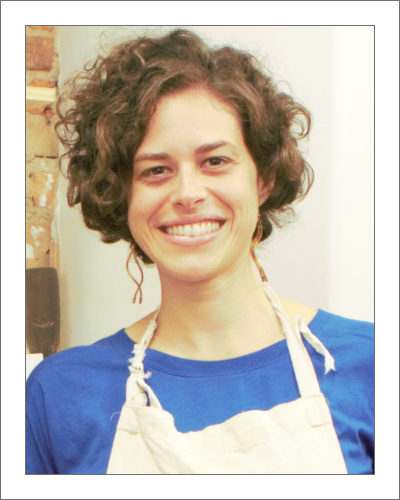
Barbara Anderaos is a ceramic artist, living and working in her studio “Objeto Cerâmico” in Santos, SP, Brazil. She has a BA in Ceramics from Universidade Federal de São João Rei and, as an exchange student, expanded her researches at NMSU (USA) and KADK Bornholm and as resident artist at Cub Creek Foundation.

My sculptures remake the relationship between a person's memory and architectural environment, the idea that our memories are products of our body’s experience of physical space. I’m trying to rethink artifacts of Industrial Archaeology, which is the systematic study of material evidence associated with the industrial past. I am very interested in the idea that artwork can make a chain of association with certain feelings or images that a person has seen before.

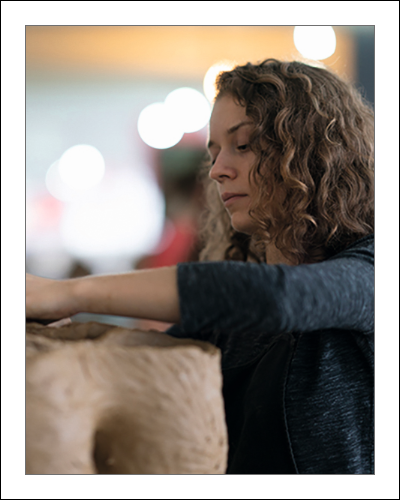
Nataliya Zuban was born in 1992 in Opichnia, Ukraine. She received both her MFA and BFA from the Lviv National Academy of Arts, Ukraine in 2015 and 2013 respectively. She has recently completed a short-term residency at the Ceramic Creative Center, at the Clayarch Gimhae Museum, South Korea and A-I-R program of the Fule International Ceramic Art Museums in Fuping, China. In 2019 Nataliya became a member of International Academy of Ceramics in Geneva, Switzerland. She is currently studying her third year of an Interdisciplinary PhD at the Eugeniusz Geppert Academy of Art and Design in Wroclaw, Poland.
 5:00pm-5:30pm
5:00pm-5:30pm
The Clay Studio’s Pottery Unplugged bicycle project grew out of our commitment to engage the community with free opportunities for everyone. Our pedal-powered pottery wheel travels through Philadelphia neighborhoods, attracting curious people wherever it stops. One-person pedals, the other throws a pot. This collaboration gives space for connection and discovery.

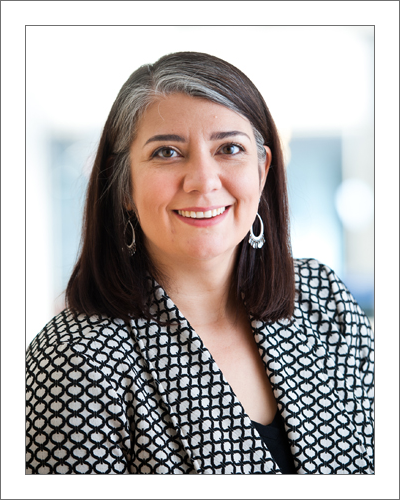
Josie Bockelman is the Chief Operating Officer, oversees daily operations of The Clay Studio. Since earning her Bachelor of Arts in ceramics from Whitman College, Bockelman has been dedicated to non-profit community art education. She believes strongly in fostering an educational community that is vibrant, inclusive and supportive./p>
 11:00am-12:00pm
11:00am-12:00pm
Have you ever wondered what it is like to grow up in a family of artists and then end up a scientist? What does thinking like an artist offer the scientist? Can the blending of art and science encourage a more diverse population of students to pursue science, and improve the public understanding of science? Skop will give you an exciting glimpse into her life and how she has impacted science, education and the public with her two passions: science and art.
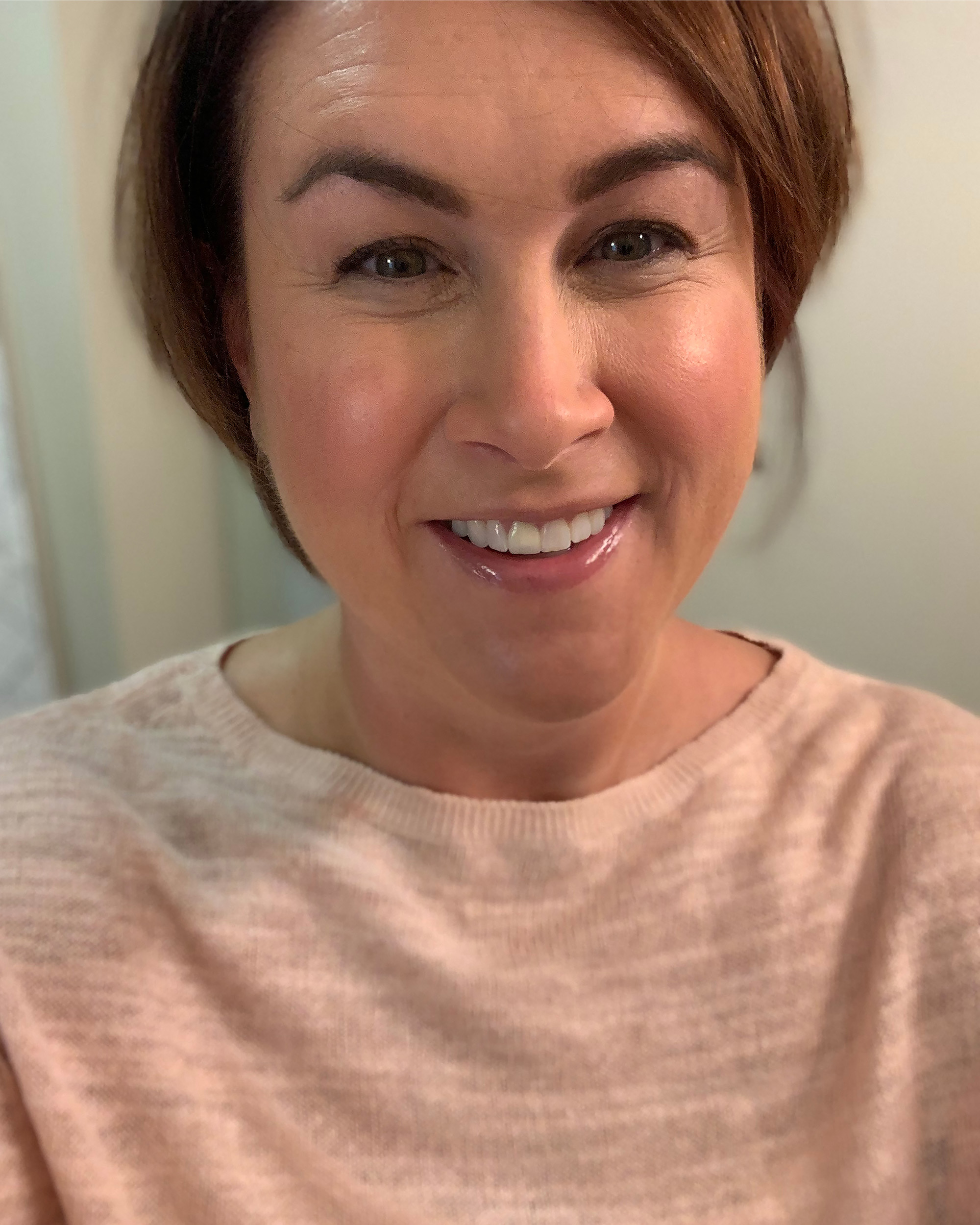

Ahna Skop is a geneticist, artist, science communicator, and champion for the underrepresented in science. Her lab studies how cells divide. Cell division is highly dependent on visual data, which dovetails perfectly with one of her other passions, art. Ahna has several scientific art installations on the UW-Madison campus and she has also curated, and created several traveling science art exhibitions. Ahna majored in biology and minored in ceramics at Syracuse University, obtained her Ph.D. in Cell and Molecular Biology at UW-Madison, and her post-doctoral work at UC-Berkeley. Ahna is a Professor in the Laboratory of Genetics and an affiliate faculty member in Life Sciences Communication and the Division of the Arts at the UW-Madison.
 12:15pm-12:45pm
12:15pm-12:45pm
Who is Sascha Brastoff? The pioneering queer icon Sascha Brastoff (1918-1993) appeared in a major motion picture and won a top award at the 1948 Ceramic National, yet remains almost unknown outside the sphere of California ceramic collectors. In conjunction with an upcoming retrospective of the artist’s work at the Everson Museum of Art, this presentation will demonstrate Brastoff’s contributions to a new generation of artists.

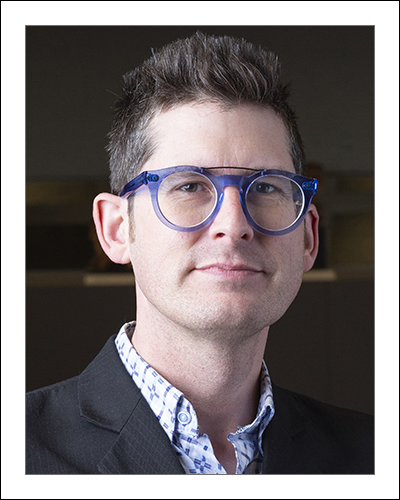
Writer, curator, and educator Garth Johnson is the Paul Phillips and Sharon Sullivan Curator of Ceramics at the Everson Museum of Art in Syracuse, New York. Johnson previously served as curator at the ASU Art Museum Ceramics Research Center in Tempe, Arizona and at the Clay Studio in Philadelphia.
 12:15pm-1:15pm
12:15pm-1:15pm
This lecture will explore the chemistry of crystalline glazes.


Matthew Katz has a B.F.A. from Alfred University and a M.F.A. from The University of Colorado-Boulder. Matthew teaches ceramic materials for artists at Alfred University as well as Harvard University, The Rhode Island School of Design, The Herron School of Art, Hood College, Montana State University, and others. In his time Matt has dedicated himself to unveiling the myths and mysteries of glazes and clays.
 12:15pm-1:45pm
12:15pm-1:45pm
Curious about the Fulbright Scholarship in the Creative Arts? This presentation aims to focus on constructive advice on how and what makes a dynamic and multivalent proposal.

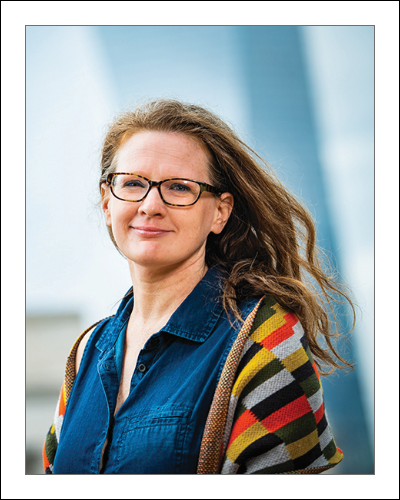
Ellis received her M.F.A. in Printmaking at Tyler School of Art in 2013. She was awarded a U.S. Fulbright student scholarship for Egypt, as well as an Arabic language grant for 2009-2010 and was based in Cairo, Egypt. She served as a U.S. Peace Corps volunteer in Morocco, from 2006-2008, working for the Moroccan Ministry of Handicrafts. She is currently the Grants Manager and Development Coordinator at The Clay Studio in Philadelphia, PA.

Curious about the Fulbright Scholarship in the Creative Arts? This presentation aims to focus on constructive advice on how and what makes a dynamic and multivalent proposal.

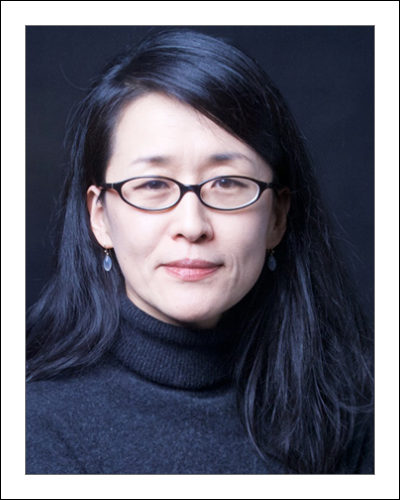
Jae Won Lee received an MFA from New York State College of Ceramics at Alfred University. She is currently Professor of Art at Michigan State University. She has participated in numerous artist-in-residence programs and exhibited her ceramic sculpture and works on paper/textile in numerous national and international exhibitions.

Curious about the Fulbright Scholarship in the Creative Arts? This presentation aims to focus on constructive advice on how and what makes a dynamic and multivalent proposal.

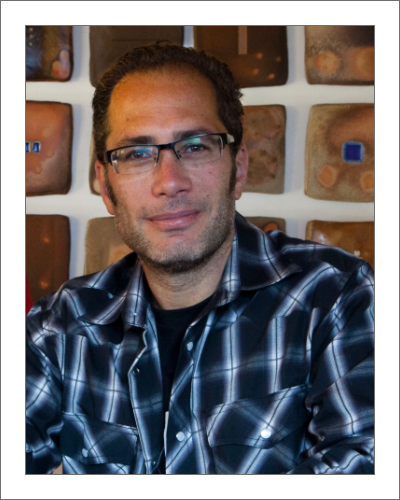
Simon Levin has been working in clay since 1990, when an elective ceramics course changed the arc of his life. Simon is a fulltime studio potter working exclusively with wood firing. He holds an MFA from the University of Iowa. He exhibits, teaches, builds kilns, and is published internationally. Though a writer of many bios, Simon still dislikes writing about himself in the third person. In 2013 he was a Senior Fulbright Scholar researching local materials in Taiwan. Between 2004 and 2020 his apprenticeship program has trained and influenced 22 potters. He hosts a video series on the Ceramics Arts Network, where he brings dialogue to process. Currently the Director at Large for NCECA, Simon seeks everyday to advance the frontiers of clay, and evangelize for this empowering material.

Curious about the Fulbright Scholarship in the Creative Arts? This presentation aims to focus on constructive advice on how and what makes a dynamic and multivalent proposal.

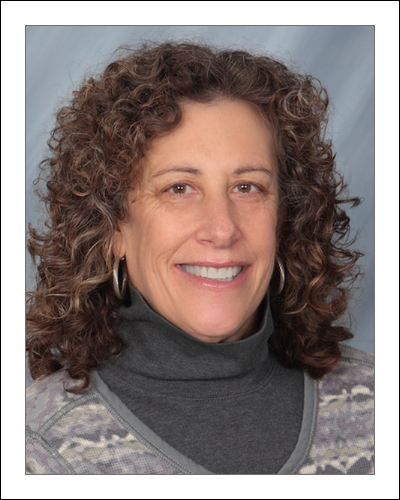
Born in Cleveland, Ohio. Lives in Cedar Falls, Iowa. Professor of Art at the University of Northern Iowa. Attended New York State College of Ceramics, Alfred University (B.F.A. 1981) and Louisiana State University (M.F.A. 1986). Served as Vice President on the Watershed Center for the Ceramic Arts Board of Trustees.
 1:00pm-2:30pm
1:00pm-2:30pm
African-American potters were active in diverse contexts during the 19th century. Just as fired clay reveals history as archeological evidence, the work of enslaved and free potters in New York City, South Carolina, Georgia, and Virginia illuminates the robust role African Americans have played in American culture and ceramic history.

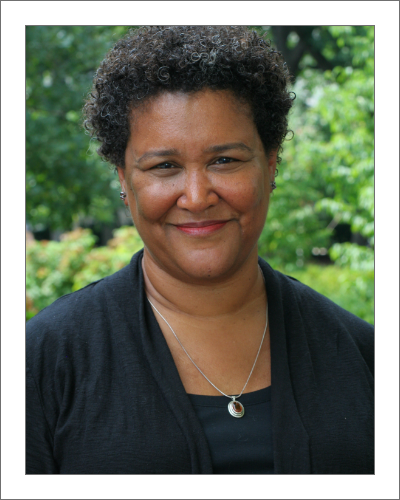
Leslie M. Harris, Professor of History, Northwestern University, is the author or co-editor of five books on U.S. slavery, and has worked with a number of museums on public history projects to bring the history of slavery to the general public.

African-American potters were active in diverse contexts during the 19th century. Just as fired clay reveals history as archeological evidence, the work of enslaved and free potters in New York City, South Carolina, Georgia, and Virginia illuminates the robust role African Americans have played in American culture and ceramic history.

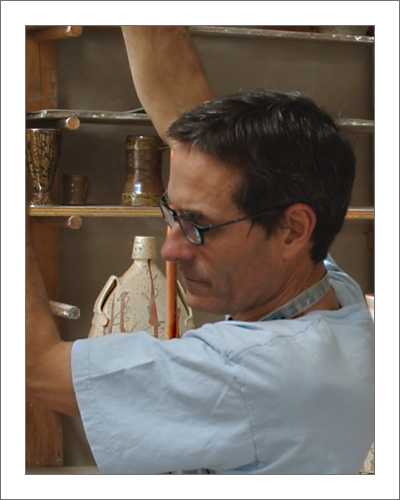
"A 2019 Smithsonian Artist Resident Fellow, Mark Shapiro’s pots are in many public collections. He edited ""A Chosen Path: The Ceramic Art of Karen Karnes"" (UNCP 2010), founded the Apprenticelines project, and is a founding member of POW! (Pots on Wheels!) He launched the Make-In Studio at last year’s NCECA."

African-American potters were active in diverse contexts during the 19th century. Just as fired clay reveals history as archeological evidence, the work of enslaved and free potters in New York City, South Carolina, Georgia, and Virginia illuminates the robust role African Americans have played in American culture and ceramic history.


Adrienne Spinozzi is an Assistant Research Curator of American Decorative Arts at The Met where she specializes in ceramics and 19th and 20th-century decorative arts. She is currently organizing two exhibitions: one is of 20th and 21st century ceramics from pioneering collector, Robert A. Ellison Jr.; the other is of 19th-century stoneware from Old Edgefield District, South Carolina, the American Wing’s first exhibition to highlight the work of enslaved African American artisans.

African-American potters were active in diverse contexts during the 19th century. Just as fired clay reveals history as archeological evidence, the work of enslaved and free potters in New York City, South Carolina, Georgia, and Virginia illuminates the robust role African Americans have played in American culture and ceramic history.

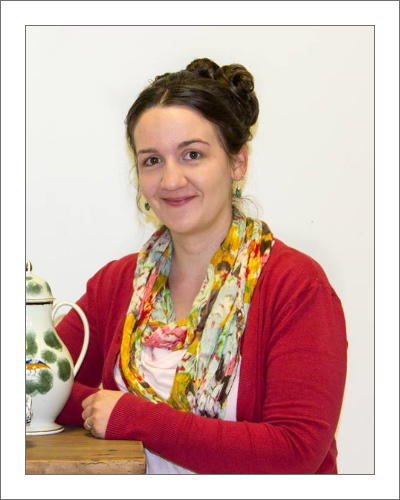
Brenda is an independent scholar and a potter, using her studio, Liberty Stoneware, as an outlet for historic ceramics research. In 2012, she built a wood-firing, salt-glaze kiln. She is a graduate of the Winterthur Program in American Material Culture and an alumna of Berea College Ceramics Apprenticeship Program.

African-American potters were active in diverse contexts during the 19th century. Just as fired clay reveals history as archeological evidence, the work of enslaved and free potters in New York City, South Carolina, Georgia, and Virginia illuminates the robust role African Americans have played in American culture and ceramic history.

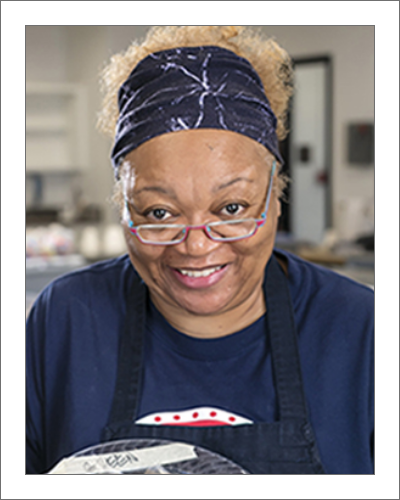
"Earline Green is an educator and ceramic artist with work in public/private collections. She is published in ""500 Tiles, Image Transfer on Clay"" and ""Pottery Making Illustrated"". She is featured in Paragon Kilns Testimonial Advertisements, 2008-present; and as the ""Potter"" in the TD Jakes ""Potter’s Touch"" Television Ministry, 2007-08."

Description

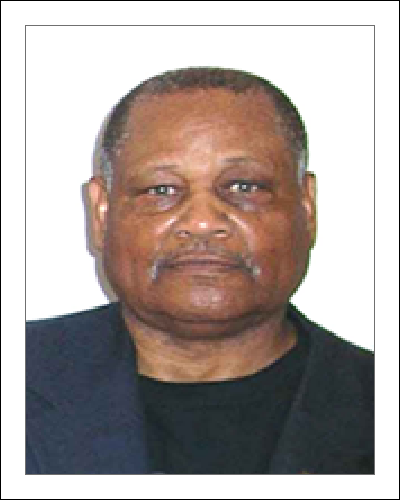
David F. Mack is a clay activist artist, educator, military veteran, and 2018 HOF Athletic Inductee-Baltimore City Community College. David is the author of “Enslaved and Freed African American Potters”, that appeared in the 2020 Sept. edition of Ceramic Monthly Magazine. David has received 3 NCECA program acceptance proposal letters.
 1:30pm-2:30pm
1:30pm-2:30pm
Four interdisciplinary artists working with clay and assorted media explore notions of contingency, relation, shelter, communication, space, and emotion through materiality and form, drawing on or refuting traditional approaches to ceramics.

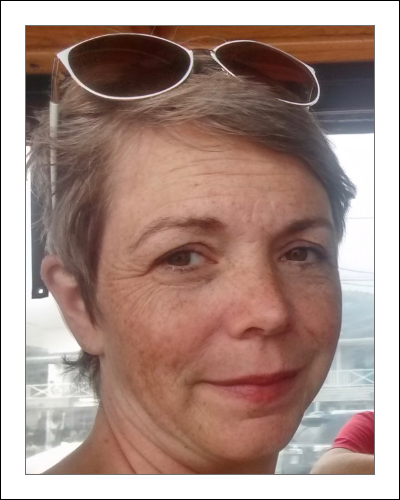
Allison Moore is a scholar, curator and critic of contemporary art, contemporary African art and photography, and critical theory. She has published in Artforum, Afterimage, and ’Even as well as in scholarly journals and exhibition catalogs. Her

Four interdisciplinary artists working with clay and assorted media explore notions of contingency, relation, shelter, communication, space, and emotion through materiality and form, drawing on or refuting traditional approaches to ceramics.

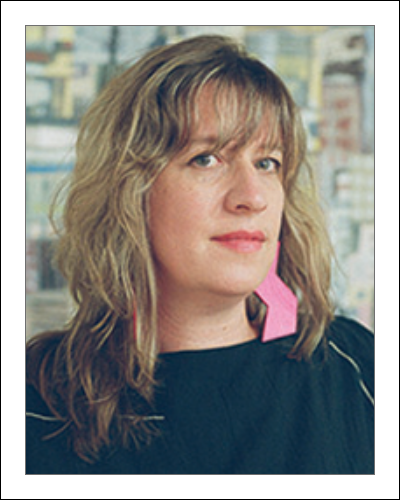
Sue Havens is an artist based in New York and Tampa, and is a Professor of Art at the University of South Florida. Her works recombine everyday vernacular through mixed media, and are featured in New American Paintings Magazine, the Gyeonggi International Ceramic Biennale in Korea, and Warhol’s Interview Magazine.

Four interdisciplinary artists working with clay and assorted media explore notions of contingency, relation, shelter, communication, space, and emotion through materiality and form, drawing on or refuting traditional approaches to ceramics.

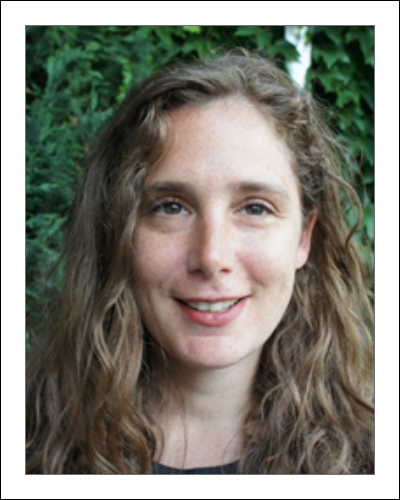
Fawn Krieger is a NY-based artist, whose multi-genre works examine touch, ownership, and exchange. Her work has been featured in the New York Times, Artforum, Art in America, Sculpture Magazine, and Texte zur Kunst. She serves as Grants Officer at The Keith Haring Foundation and Adjunct Faculty at Adelphi University.

Four interdisciplinary artists working with clay and assorted media explore notions of contingency, relation, shelter, communication, space, and emotion through materiality and form, drawing on or refuting traditional approaches to ceramics.

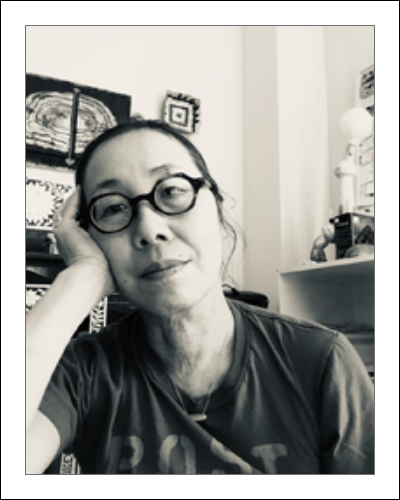
Keiko Narahashi was born in Tokyo and and lives in NYC. She explores painting through clay, metal, paper, photography, and paint. She has recieved a New York Foundation for the Arts Fellowship Grant in Painting, and her work has appeared in The New Yorker, Vogue, and The Brooklyn Rail.

Four interdisciplinary artists working with clay and assorted media explore notions of contingency, relation, shelter, communication, space, and emotion through materiality and form, drawing on or refuting traditional approaches to ceramics.

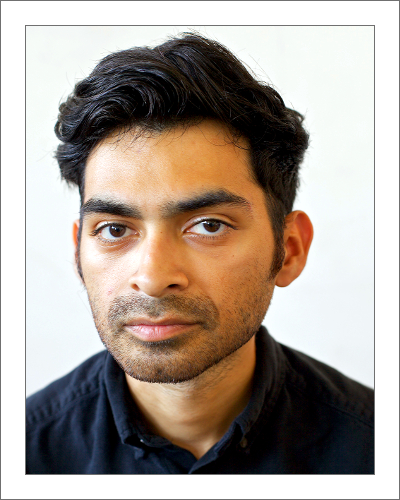
Daniel Alejandro Trejo is a visual artist based out of Stockton, California working in ceramic sculpture. He received his BA in Art Studio and Art History from UC Davis. Currently, Trejo is a resident at Verge Center for the Arts in Sacramento, California where he maintains his studio practice.
 2:00pm-3:00pm
2:00pm-3:00pm
Forgotten by clay artists and schools for 100 years, china painting is making a comeback. A new generation of clay atist/painters is taking this traditional medium in innovative directions, using new techniques, materials and mediums. China paint is a growing part of the explosion of image generation.

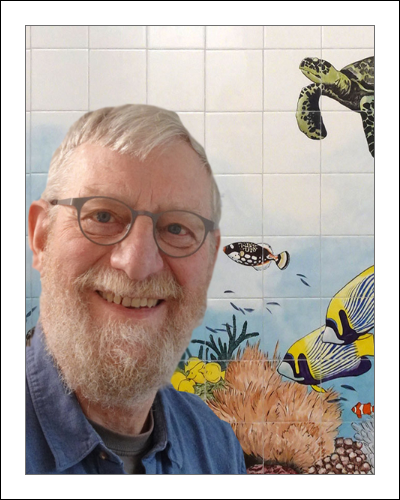
Paul Lewing is author of “China Paint & Overglaze” and companion DVD “New Directions in China Painting”. He’s been President of Washington Potters' Association and Northwest Designer-Craftsmen, and NCECA Glaze Doctor. In over 50 years in ceramics, he has done over 1000 tile commissions, and taught workshops in every state.
 2:45pm-3:45pm
2:45pm-3:45pm
The U.S. National Park System has a 100-year interdependent history with artists. Uncover how ceramicists can find inspiration while joining this venerable tradition through Art Residencies. Witness geological, archeological, and conservation themes that framed my own work, created during five AIRS. Join the dialogue; the Parks await your voice.

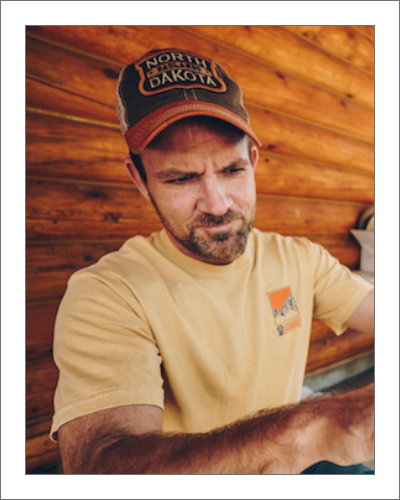
Brad Bachmeier is a recipient of 45+ national/international grants and awards in ceramics and education. His work resides in all 50 states and many prestigious collections. One of 19 brick sculptors in the U.S. He lives with his family in Fargo, ND, and is a tenured professor at Minnesota State University, Moorhead.

‘Professional Development’ is a term often used by academics and professional artists, but what constitutes professional activity that actually benefits the artist or educator? What breathes new life into your art, or inspires you to teach? What activities do you feel have genuinely advanced your career or promoted your art?

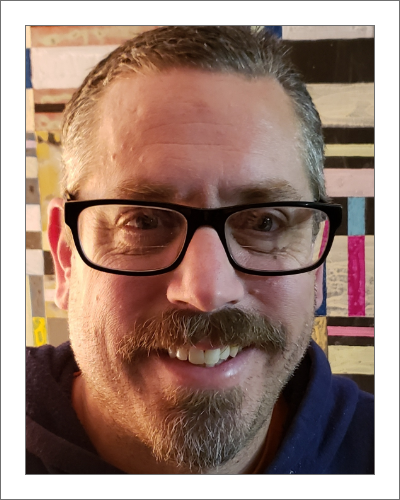
David Smith is the Associate Professor of Ceramics at Salisbury University (Salisbury, MD). He has also taught Ceramics and 3D Design at the University of Arkansas (Little Rock, AR), Flathead Valley Community College (Kalispell, MT), and Southeastern Louisiana University (Hammond, LA). He also owns ‘Little Lane Pottery’ with his wife Paula.
 3:15pm-4:15pm
3:15pm-4:15pm
During this demo April Felipe will be explaining her process of bringing ceramic material in a cohesive manner with desperate materials such as fabrics papers and other objects. She will explain the non-ceramic materials that are used to bridge the connection between ceramic and non-ceramic objects.
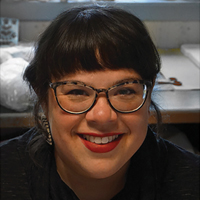
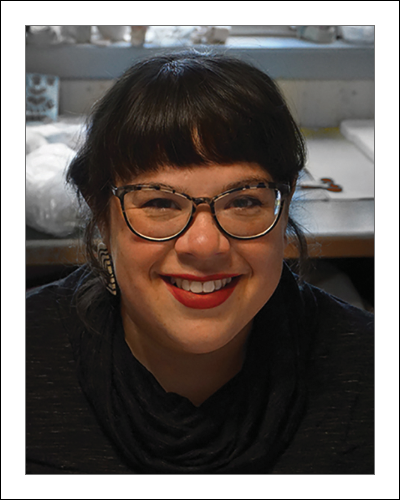
April Felipe received her B.F.A from The New York State College of Ceramics at Alfred University and her M.F.A from Ohio University. April lives in Albany, Ohio working from home studio. She is an Organizer For The Color Network, and teaches outreach at the Dairy Barn Arts Center.
 4:00pm-5:00pm
4:00pm-5:00pm
Join us for this problem-solving session! During this presentation, a panel of experts will provide answers/guidance/suggestions on problems associated with clay bodies, forming, and firing. Examples of such concerns may include: cracking and warping, raw material substitutions, firing temperature reduction, oxidation/reduction firing, wood/gas/electric firing, thermal shock, dunting, body reduction, functional ware, sculpture bodies, and outdoor applications.

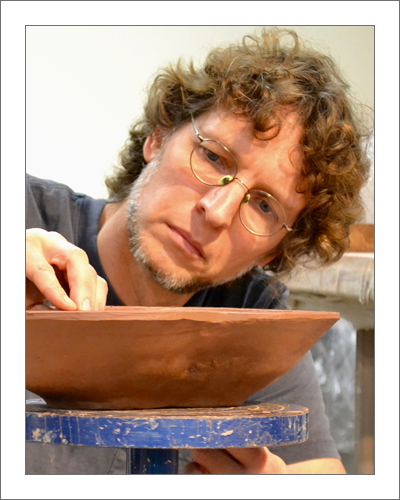
Matt Kelleher is assistant professor of ceramics at New York State College of Ceramics at Alfred University. He joined the faculty in 2015 after a decade of working as a studio potter in the mountains of Western North Carolina. Matt has participated in residencies at Penland, Archie Bray, Shigaraki, and Jingdezhen Ceramic Institute.

Join us for this problem-solving session! During this presentation, a panel of experts will provide answers/guidance/suggestions on problems associated with clay bodies, forming, and firing. Examples of such concerns may include: cracking and warping, raw material substitutions, firing temperature reduction, oxidation/reduction firing, wood/gas/electric firing, thermal shock, dunting, body reduction, functional ware, sculpture bodies, and outdoor applications.

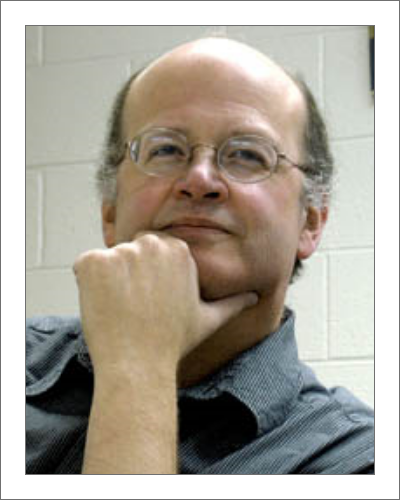
John Neely is Professor of Ceramics at Utah State University in Logan, Utah, where he has taught since 1984. Since 1975, he has exhibited and lectured in the US, Europe and around the Pacific Rim. Most of his studio work is intended for the tabletop or kitchen.

Join us for this problem-solving session! During this presentation, a panel of experts will provide answers/guidance/suggestions on problems associated with clay bodies, forming, and firing. Examples of such concerns may include: cracking and warping, raw material substitutions, firing temperature reduction, oxidation/reduction firing, wood/gas/electric firing, thermal shock, dunting, body reduction, functional ware, sculpture bodies, and outdoor applications.

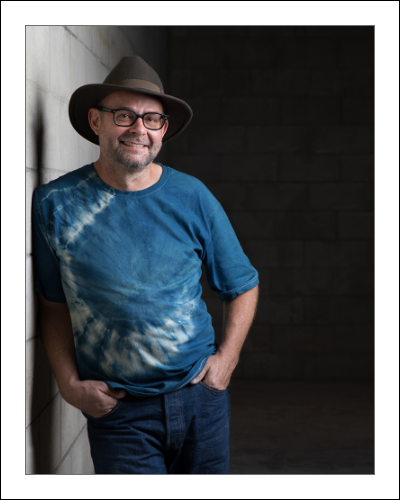
Brad Evan Taylor is currently Associate Professor of Art at the University of Hawaii at Manoa in Honolulu. He actively exhibits and participates in symposia and residencies worldwide. Recently Taylor received the Silver Prize in the Taiwan Ceramics Biennale. He is a member of the International academy of Ceramics.

Join us for this problem-solving session! During this presentation, a panel of experts will provide answers/guidance/suggestions on problems associated with clay bodies, forming, and firing. Examples of such concerns may include: cracking and warping, raw material substitutions, firing temperature reduction, oxidation/reduction firing, wood/gas/electric firing, thermal shock, dunting, body reduction, functional ware, sculpture bodies, and outdoor applications.


Dr. William Carty retired from Alfred University after 27 years as a Ceramic Engineering professor. He taught engineering courses and still teaches “Ceramic Science for the Artist” and industrial short courses. He is a world-recognized expert and consultant to the ceramic industry and continues to conduct research at AU.
 4:00pm-5:30pm
4:00pm-5:30pm

What’s in a mark? In this presentation, we will tell stories told by marks, how marks matter in research, curation and collection, and discuss what we can do to ensure our work can be identified into the future, and that pre-internet makers don’t disappear from memory altogether.


Judith S. Schwartz, PhD, NYU Professor Emeritus, Curator, Juror, Author, and Collector focused on ceramic arts. Trustee, Howard Kottler Testamentary trust, Vice President International Academy of Ceramics, honorary member of NCECA and teaching excellence awardee 2018, honored by J. D. Rockefeller III, Fulbright Association, NYCATA/UFT and Everson and Renwick Museums.

What’s in a mark? In this presentation, we will tell stories told by marks, how marks matter in research, curation and collection, and discuss what we can do to ensure our work can be identified into the future, and that pre-internet makers don’t disappear from memory altogether.

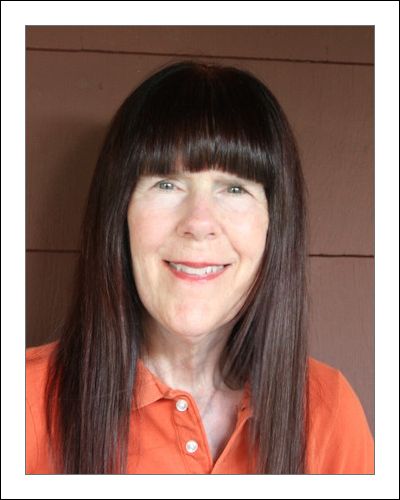
Margaret Carney is a ceramic historian who holds a Ph.D. in Asian art history. She is the founding director and curator of the International Museum of Dinnerware Design in Ann Arbor, Michigan. She has spent her life curating exhibitions, lecturing, and writing about ceramics and the related arts.

What’s in a mark? In this presentation, we will tell stories told by marks, how marks matter in research, curation and collection, and discuss what we can do to ensure our work can be identified into the future, and that pre-internet makers don’t disappear from memory altogether.

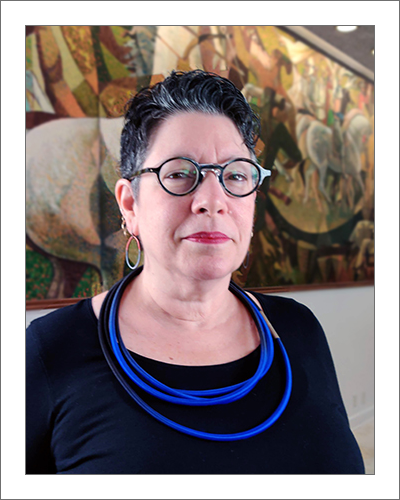
Bethann Gerstein- is the Executive Director of the American Museum of Ceramic Art in Pomona, CA. Gerstein holds an MFA from Cranbrook Academy of Art, MI and a BFA from Edinboro University, PA. She serves on the Board of Watershed Center for Ceramic Arts, ME.

What’s in a mark? In this presentation, we will tell stories told by marks, how marks matter in research, curation and collection, and discuss what we can do to ensure our work can be identified into the future, and that pre-internet makers don’t disappear from memory altogether.

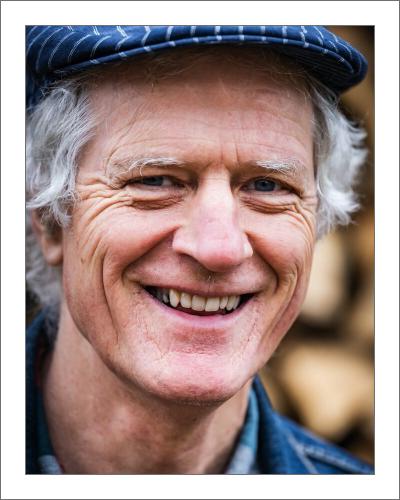
Mark Hewitt, Mark’s father and grandfather were Directors of Spode. He apprenticed with Michael Cardew and Todd Piker, and moved to North Carolina in 1983. He makes wood-fired functional pots, has written two books on Southern pottery, was President of the NC Pottery Center, and was awarded a United States Artist Fellowship.
 4:30pm-5:30pm
4:30pm-5:30pm
Parsons and Selman will share their research into a process for casting ceramic forms in molds 3D-printed with ordinary PLA plastic, which is then melted away. The result can be glazed with regular ceramic glazes, and fired to standard ceramic temperature ranges.

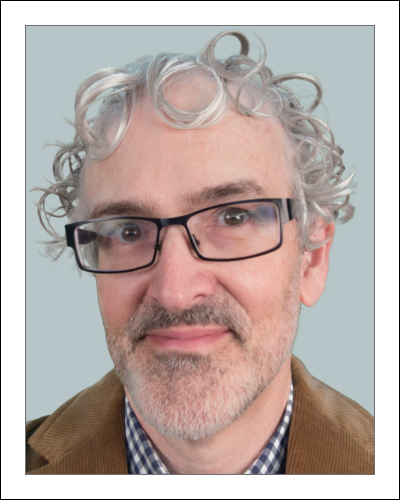
Colby Parsons, MFA, is a Professor, and Interim Chair of Visual Arts at Texas Woman’s University in Denton, where he teaches Ceramics and Digital Craft. Parsons’ work applies aspects of traditional media approaches to digital-based processes, working in a range of media and formats.

Parsons and Selman will share their research into a process for casting ceramic forms in molds 3D-printed with ordinary PLA plastic, which is then melted away. The result can be glazed with regular ceramic glazes, and fired to standard ceramic temperature ranges.

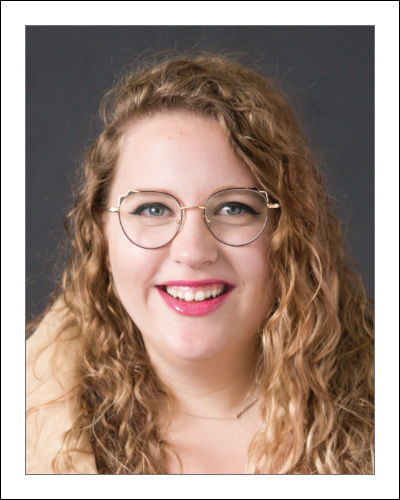
Hanna Selman is an artist living in Denton, Texas, where she attends Texas Woman’s University and works as a Graduate Research Assistant for Professor Colby Parsons. She received her BFA from Fort Hays State University. Her current work is an exploration of intuitive thought and its ability to process emotions.
 4:45pm-5:45pm
4:45pm-5:45pm
I will demonstrate the underglaze inlay (Mishima) process that I use to draw fine lines on my pottery as well as the glaze trailing process I use to fill in the inlayed drawings.


Andrea is a full time studio potter in Floyd, Virginia. She completed her MFA at Syracuse University, BFA at West Virginia University, and worked as an apprentice for Silvie Granatelli. Her current body of work is made with a grolleg porcelain clay body, underglaze inlay, and layered transparent glazes.
 5:15pm-5:45pm
5:15pm-5:45pm
"My progression color blending method destigmatizes the mathematical concepts involved, and transforms them into small, accurate devices that generate any number of mixtures, to any resolution of similarity. The traditional mathematical and methodical burdens of searching for interesting blends are removed or simplified, to give fast, controlled, and intuitive results."

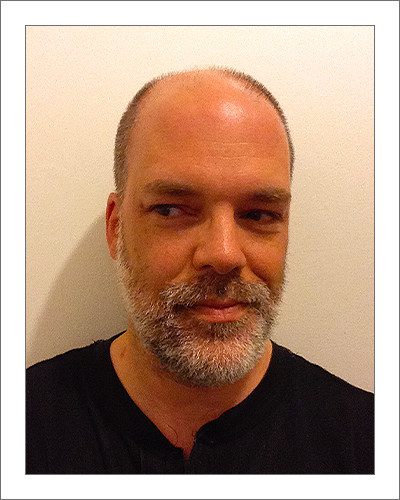
Marc Mancuso welcomes minutiae and pushes processes to extremes. After 25 years of working with clay and teaching, he works hardest to improve communication within ceramics, and fosters crossover efforts into mathematics and design. Marc searches for the nuanced sentiment, a useful reference, or the right technique that makes progress inevitable.
 11:00am-12:00pm
11:00am-12:00pm
Rael will discuss how an expanded understanding of the borderlands has fostered experimentation, play, and clay in Mexico and the USA.


Ronald Rael draws, builds, writes, 3D-prints and teaches about architecture and craft as a cultural endeavor deeply influenced by a unique upbringing in a desolate alpine valley in southern Colorado. As the San Francisco Chronicle writes, "[Rael's] imagination is audacious. He speculates on the implications of the border wall, building with mud and using 3D printers to create buildings -- as seen in his books Borderwall as Architecture, Earth Architecture and Printing Architecture. Rael is a professor of architecture at the University of California, Berkeley and is a founding partner of the Oakland based Make-Tank, Emerging Objects. You can see his drawings, models and objects in the permanent collections of the Museum of Modern Art, the Cooper Hewitt Smithsonian Design Museum and the San Francisco Museum of Modern Art.
 12:15pm-1:15pm
12:15pm-1:15pm
This lecture is a survey of the both breadth of video being made by ceramic artists and videos about ceramics by those outside the field. In the last ten years, social media and advances in cell phone cameras has deeply impacted how artists make, learn, share outreach, and run successful businesses.

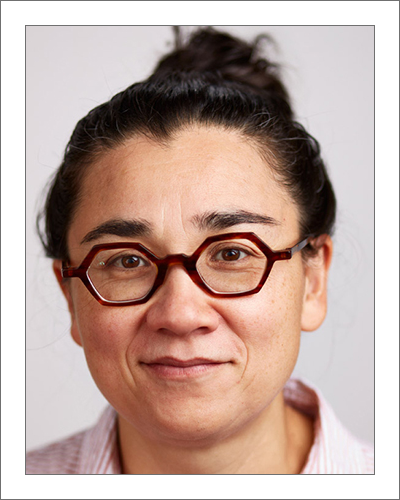
Ayumi Horie is a studio potter based in Maine, who co-founded The Democratic Cup, Pots In Action, Portland Brick, Obamaware and Handmade For Japan. She is a Distinguished Fellow in Craft at United States Artists and is a trustee at the American Craft Council and Haystack Mountain School of Crafts.

The nature of text is evolving. Via personal, political and poetic lenses, Stephanie Lanter, Dawn Holder, Bobby Silverman, Joshua Hebbert, and Angela Carbone examine the essence and function of words through ceramic forms. In this panel, we will discuss the role of ambiguity, influence, and process in language, and potential pathways to connection and disconnection.

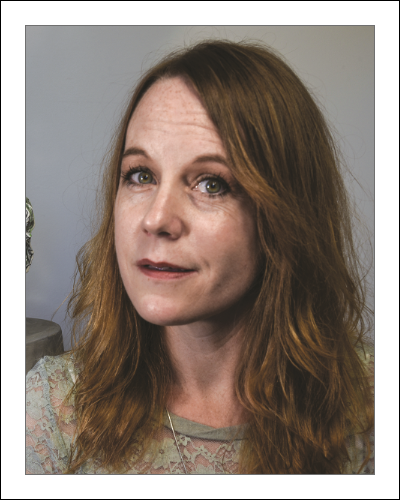
Stephanie Lanter has been exhibiting internationally, teaching, and writing since 2000. Currently an Assistant Professor of Ceramics at the Hartford Art School, her residencies include the Red Lodge Clay Center, Archie Bray, Arrowmont, LH Project, Anderson Ranch, Mendocino Arts Center, and Jentel. She received her MFA from Ohio University.

The nature of text is evolving. Via personal, political and poetic lenses, Stephanie Lanter, Dawn Holder, Bobby Silverman, Joshua Hebbert, and Angela Carbone examine the essence and function of words through ceramic forms. In this panel, we will discuss the role of ambiguity, influence, and process in language, and potential pathways to connection and disconnection.

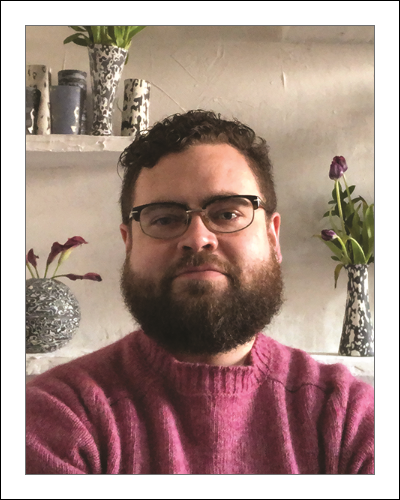
Joshua Paul Hebbert lives and works in Philadelphia, PA. After growing up in rural Western Nebraska, he studied ceramics at Creighton University in Omaha, NE and the University of Colorado--Boulder, earning his BFA and MFA, respectively. He teaches at MICA and recently completed a residency at The Clay Studio.

The nature of text is evolving. Via personal, political and poetic lenses, Stephanie Lanter, Dawn Holder, Bobby Silverman, Joshua Hebbert, and Angela Carbone examine the essence and function of words through ceramic forms. In this panel, we will discuss the role of ambiguity, influence, and process in language, and potential pathways to connection and disconnection.

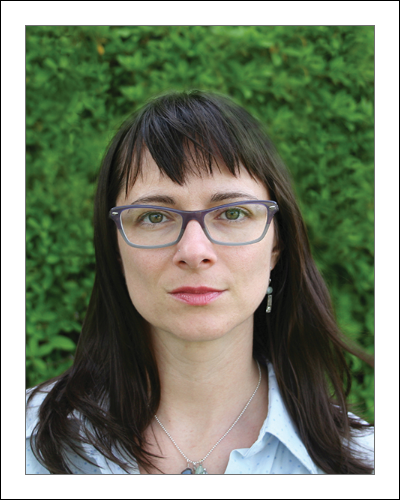
Dawn Holder is an Associate Professor of Art at the University of the Ozarks. She has received numerous accolades for her work, and has exhibited in galleries and museums internationally. She earned an MFA in Ceramics from RISD and a BFA in Ceramics from the University of Georgia.

The nature of text is evolving. Via personal, political and poetic lenses, Stephanie Lanter, Dawn Holder, Bobby Silverman, Joshua Hebbert, and Angela Carbone examine the essence and function of words through ceramic forms. In this panel, we will discuss the role of ambiguity, influence, and process in language, and potential pathways to connection and disconnection.

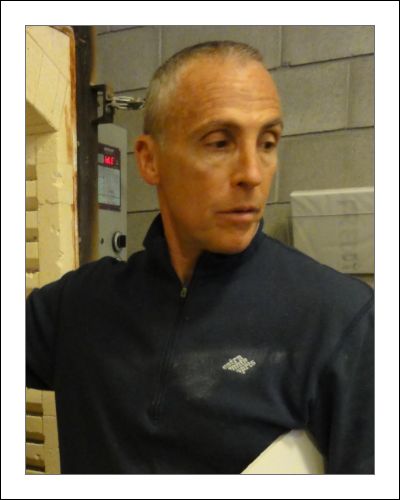
Bobby Silverman is an artist and designer who lives and works in New York City. His work has been exhibited internationally and can be found in such collections as the Museum of Art and Design, New York City, and the Renwick Gallery /Smithsonian American Art Museum, Washington ,DC.

How does depression interfere or interact with creating? What happens when mental illness overlaps with being an artist? How do artists with depression cope? These are questions that’ll be up for discussion during this Clay Conversation. The aim is to develop a better understanding of and help those with mental illness.

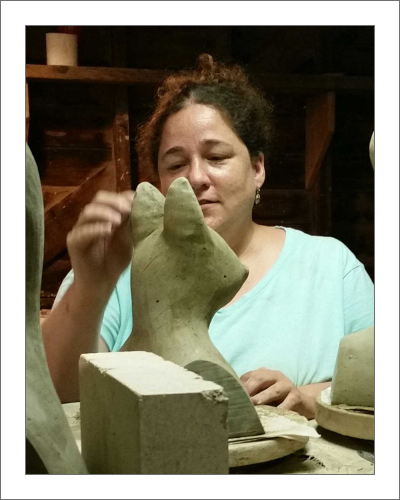
Undine Brod grew up in a trifecta of cities: Los Angeles, Seattle, and NYC. She studied art at: The Ohio State University, the University of Washington, New York University and the NYS College of Ceramics. She believes art is crucial to life and living is crucial to art.
 1:30pm-2:30pm
1:30pm-2:30pm
Ceramics are one of the few forms of material culture made and used by enslaved women that survived during the colonial period in the Caribbean. Found fragments of these objects help to provide clues to the past and give voice to the women who used them. In my presentation I share a brief history of how ceramics were a source of mobility/independence for enslaved women during the 18th century in Jamaica and Barbados and I will share how I incorporate the theme of black feminism, mobility, identity and histories into my art practice.

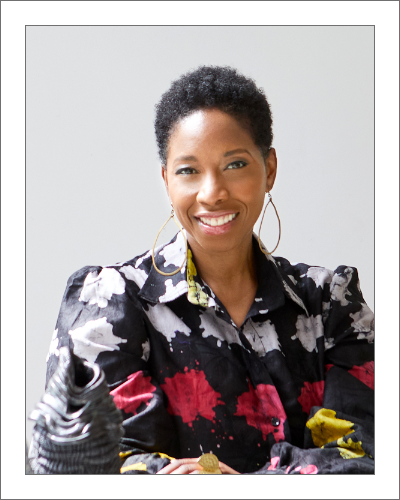
Malene Barnett is an artist and leading authority on the traditions of the African diaspora and the modern black experience. Focused on ceramics and bespoke carpets, her work has been featured in many publications and commissioned globally. A frequent keynote speaker, she was awarded 2019 designer of the year by interiors + sources and is based in New York.

A roundtable discussion surrounding systemic racism in the field of ceramics. The Color Network will present a statement video and then go into small breakout rooms where participants will discuss prompts surrounding these issues. Participants are required to show their first and last name as well as an active camera.


April Felipe received her B.F.A from The New York State College of Ceramics at Alfred University and her M.F.A from Ohio University. April lives in Albany, Ohio working from home studio. She is an Organizer For The Color Network, and teaches outreach at the Dairy Barn Arts Center.

A roundtable discussion surrounding systemic racism in the field of ceramics. The Color Network will present a statement video and then go into small breakout rooms where participants will discuss prompts surrounding these issues. Participants are required to show their first and last name as well as an active camera.


Salvador Jiménez-Flores is an interdisciplinary artist born in México. In his work he explores the themes of colonization, migration, “the other,” stereotypes, and futurism. Jiménez-Flores served as Artist-In-Residence for the city of Boston, Harvard Ceramics Program, Office of the Arts at Harvard University, and Kohler Arts Industry. Jiménez-Flores is a recipient of Joan Mitchell Foundation Painters & Sculptors Grants and The New England Foundation for the Arts, and Threewalls’ RaD Lab+Outside the Walls Fellowship Grant. He is an Assistant Professor in ceramics at the School of the Art Institute of Chicago.

A roundtable discussion surrounding systemic racism in the field of ceramics. The Color Network will present a statement video and then go into small breakout rooms where participants will discuss prompts surrounding these issues. Participants are required to show their first and last name as well as an active camera.

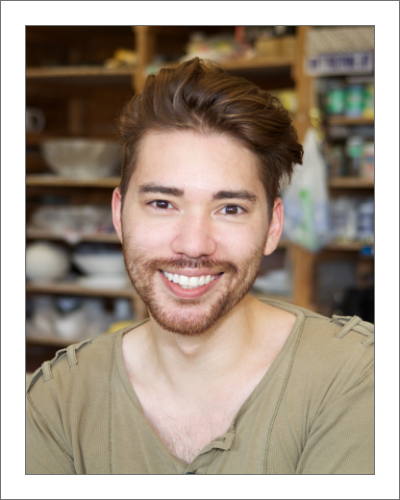
Adam Chau is an artist in Cold Spring, NY. A graduate of the School of the Art Institute of Chicago, his research blends digital manufacturing with traditional studio techniques. In 2018 he received the NCECA Emerging Artist Award and in 2019 he became a member of the International Academy of Ceramics.

A roundtable discussion surrounding systemic racism in the field of ceramics. The Color Network will present a statement video and then go into small breakout rooms where participants will discuss prompts surrounding these issues. Participants are required to show their first and last name as well as an active camera.


Natalia Arbelaez is a Colombian American artist, born and raised in Miami, Florida, to immigrant parents. She received her BFA from FIU and her MFA from OSU. Her work has been exhibited internationally, in museums, galleries, and included in various collections, such as the Everson Museum and MAD Museum.
 1:30pm-3:15pm
1:30pm-3:15pm
How do the new generation of artists that emerged from ceramic programs with multifaceted digital teaching and practices create their work? This presentation will explore what it means to learn within such programs that are seeking new ways to explore clay and digital technologies. Demonstrations will include methodologies and techniques for parametric modeling and hybrid digital/analog fabrication - specifically, mesh manipulation for Rhino, CNC machining, and mold-making.

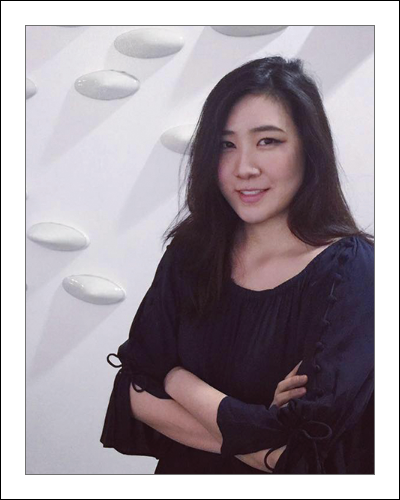
Audrey is currently an MFA candidate at Penn State University. She received her BFA from Alfred University and studied at Colorado State University as a post-baccalaureate student. Her studio practices question - how to hybridize digital technologies to ceramic creativity from the perspective of ‘convergence’, which could be cultural, technological, dimensional, or interdisciplinary.

How do the new generation of artists that emerged from ceramic programs with multifaceted digital teaching and practices create their work? This presentation will explore what it means to learn within such programs that are seeking new ways to explore clay and digital technologies. Demonstrations will include methodologies and techniques for parametric modeling and hybrid digital/analog fabrication - specifically, mesh manipulation for Rhino, CNC machining, and mold-making.

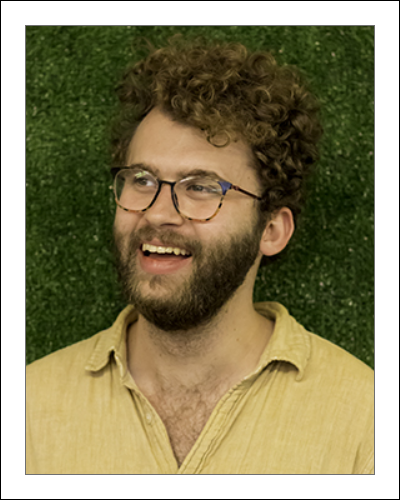
Austin Bradshaw is a conservationist, and artist who uses experiences in the outdoors as a material. He incorporates analog and digital processes in producing his work. He graduated from the Kansas City Art Institute in 2017 with a BFA and attends Pennsylvania State University as a graduate student.
 2:45pm-3:45pm
2:45pm-3:45pm
This Presentation showcases one year of experimental development focused on multicolor ceramic 3D printing. Initiated in 2019 by Lauerman, the project is a collaboration that brings together an artist with a small team of undergraduate students of Engineering and Material Science at Penn State University.

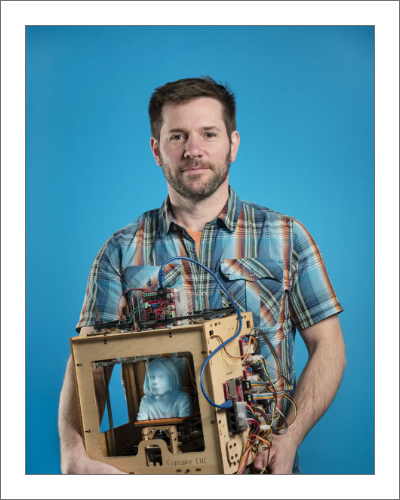
Tom Lauerman is an artist whose work presents an homage to overlooked or unbuilt architectural forms. An inveterate tinkerer, his experimental approaches to digital fabrication and computational design are continually informed by established sculptural and craft techniques. Tom received his MFA from Cranbrook Academy of Art and serves as Associate Professor of Studio Art at Penn State University.
 3:15-4:15pm
3:15-4:15pm
In this lecture I will draw upon my participatory work, FACTORY. Appearing at the Tate Modern in 2017, this work addressed ideas about material, knowledge, transformation and value through clay practice. This presentation will center on the exploration of object engagement beyond historic models of clay practice.

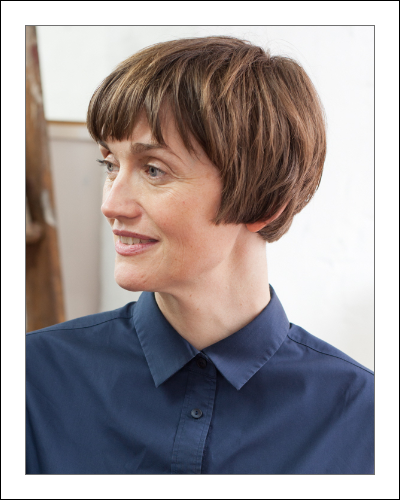
Clare Twomey is a British artist, researcher, and curator (b 1968). Twomey is a leading figure in the applied arts; she is an advocate for craft as commensurable to the wider visual arts. Her practice can be understood as ‘post-studio ceramics’, as her work engages with clay yet often at a critical distance. Twomey’s work negotiates the realms of performance, serial production, and transience, and often involves site-specific installations.
 3:30pm-4:00pm
3:30pm-4:00pm
This presentation considers a phenomenological approach to digital making, and the ways this can inform the creation of handmade ceramics. By firstly taking simple forms and transforming them digitally, the ceramicist can create a haptically seductive object. This session will feature examples that were made during a residency at the EKWC.

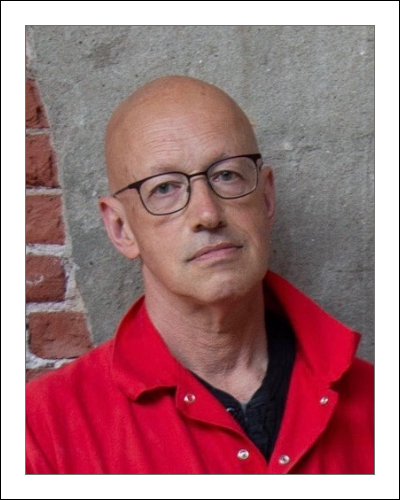
David is a maker and author. His PhD is from Manchester Metropolitan University; his BA in Philosophy and Literature was from Warwick University, UK. He has been elected to the Governing Council of the International Academy of Ceramics and is a Fellow of the Crafts Potter Association of the UK.
 4:00pm-5:30pm
4:00pm-5:30pm
You earned the degree, now it’s time to put it to use! Getting started can be a maze of overcoming different challenges based on budget, studio size, and location. This panel of post MFA graduates discusses fresh avenues for studio set-up and professional practice hurdles in a changing workplace.

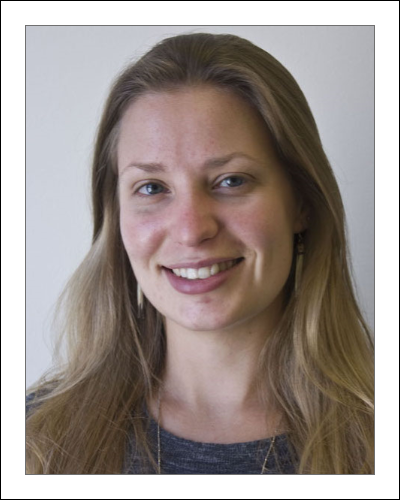
"Anne Beyer is a wood fire specialist who is currently setting up a studio and building a wood kiln in the countryside of Paducah Kentucky. She recently completed an MFA from Indiana University and works part-time as an Adjunct Instructor at the Paducah School of Art and Design."

You earned the degree, now it’s time to put it to use! Getting started can be a maze of overcoming different challenges based on budget, studio size, and location. This panel of post MFA graduates discusses fresh avenues for studio set-up and professional practice hurdles in a changing workplace.
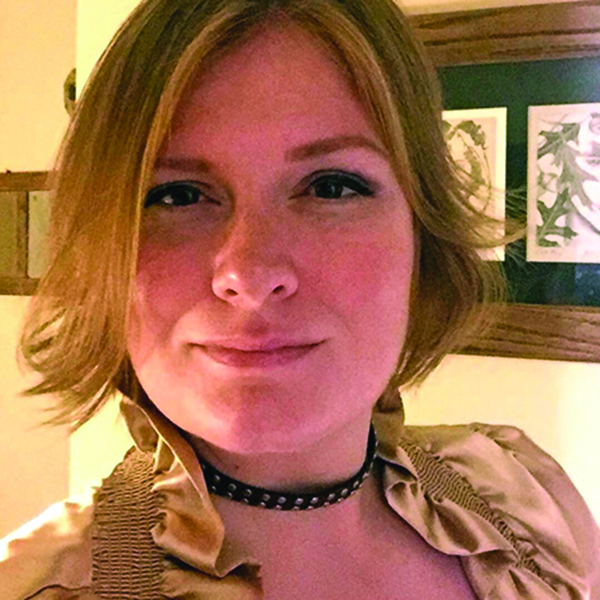

Abigale Brading completed her MFA in Ceramics at Indiana University - Bloomington in 2017. She built a home ceramics studio in Central Indiana and works full-time as a federal employee for the USPS. She decided sleep was overrated and simultaneously teaches as an adjunct professor from time-to-time.

You earned the degree, now it’s time to put it to use! Getting started can be a maze of overcoming different challenges based on budget, studio size, and location. This panel of post MFA graduates discusses fresh avenues for studio set-up and professional practice hurdles in a changing workplace.

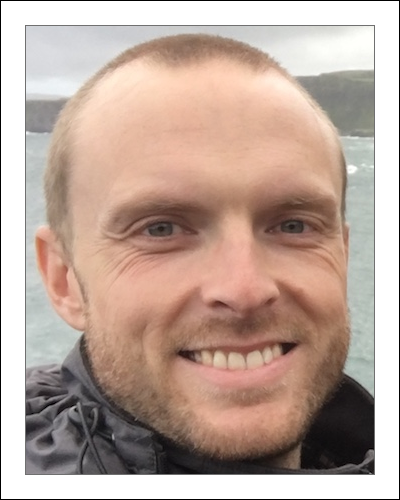
Brett Beasley is a ceramic artist and the Studio Manager at Clayworks, a nonprofit community studio located in Charlotte, NC. He earned his undergraduate degree from the University of Florida and his master’s degree from East Carolina University. Beasley exhibits his artwork at both the national and regional levels.
 4:15pm-5:45pm
4:15pm-5:45pm
Four potters from Seagrove, NC share their backgrounds, traditions, and perspectives from living and working within a community of diverse artists with a unique cultural history. In this mosaic network, families ancestrally rooted in Seagrove and families relocated from around the globe are united in clay.

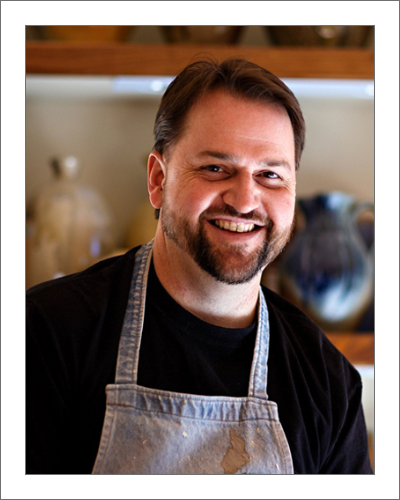
Ben Owen III is an American potter born and raised in Seagrove, NC who uses wood firing techniques for making functional and decorative pottery. A sixth-generation potter learning from his family, BFA in Ceramics at East Carolina University, Fellowship in Japan, visiting artist in Jingdezhen, China. He continues to work in the family business, Ben Owen Pottery, established by his grandfather, Ben Owen Sr.

Four potters from Seagrove, NC share their backgrounds, traditions, and perspectives from living and working within a community of diverse artists with a unique cultural history. In this mosaic network, families ancestrally rooted in Seagrove and families relocated from around the globe are united in clay.

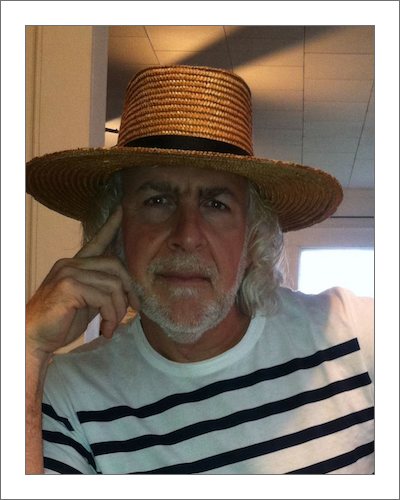
Fred began making pots by working as a production potter for many of the old Seagrove family potteries. He earned a BFA at Alfred University and a MFA at Penn State University. In 1996 he & his wife, Carol Gentithes established Johnson & Gentithes Studio in Seagrove, NC.

Four potters from Seagrove, NC share their backgrounds, traditions, and perspectives from living and working within a community of diverse artists with a unique cultural history. In this mosaic network, families ancestrally rooted in Seagrove and families relocated from around the globe are united in clay.

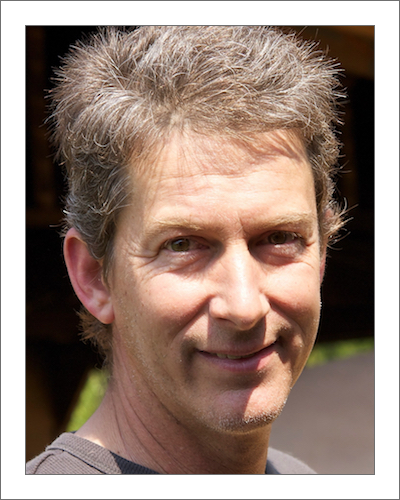
David has worked and exhibited across US, Europe and Asia. He has been a US/Japan Creative Artists Fellowship recipient, and an NEA/Central and Eastern Europe Visual Arts Fellowship recipient. He has taught at Penland School of Crafts, the Bascom Center for Visual Arts and numerous universities and colleges. His work is included in the collections of the Mint Museum of Craft and Design, the Shigaraki Ceramic Cultural Park Museum (Japan), the NC Museum of History, the Asheville Museum of Art, and the Museum of International Folk Art, among others.

Four potters from Seagrove, NC share their backgrounds, traditions, and perspectives from living and working within a community of diverse artists with a unique cultural history. In this mosaic network, families ancestrally rooted in Seagrove and families relocated from around the globe are united in clay.

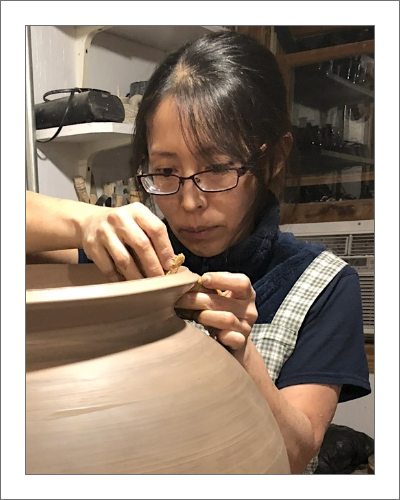
Japanese native ceramic artist in Seagrove, NC. Graduated from Okayama University with ceramic art degrees. Received Rotary International scholarship and studied at UMass-Dartmouth. Moved to Seagrove and set up a permanent pottery studio. Focus on woodfired ceramics. Became a member of IAC. Has many exhibitions in Japan, USA and Internationally.
 4:30pm-5:30pm
4:30pm-5:30pm
Working with raw materials in a systematic yet creative way can lead to the development of a unique aesthetic voice in one’s artwork. This lecture will present a range of techniques that will help you hone your use of color and surface qualities

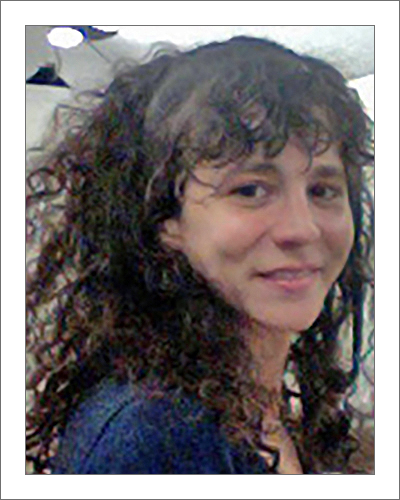
A passionate educator, writer, and researcher as well as a maker, gwendolyn yoppolo is currently serving as Assistant Professor of Ceramics at Kutztown University. She has earned an MFA in Ceramics from Penn State University, an MA in Education from Columbia University, and a BA in Sociology from Haverford College.
 4:45pm-5:45pm
4:45pm-5:45pm
This demonstration covers the method of using screen drawing fluid and screen filler to produce images direct-to-screen to produce newsprint transfers with underglazes. Viewers will be introduced to the steps for creating imagery on a screen, printing, and application onto wheel-thrown objects.

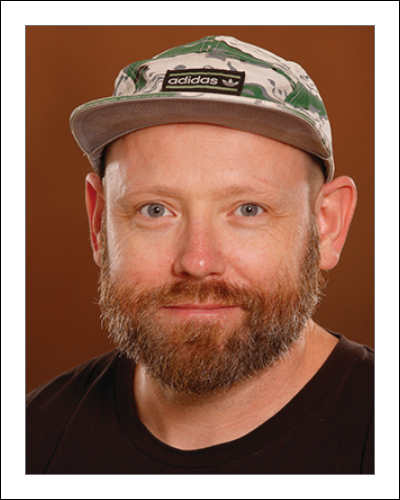
Israel “Izzy” Davis is an artist from Grand Rapids, MI. He has taught over 50 workshops on his techniques for screen-printing on clay and has been included in over 100 exhibitions. Izzy produces functional and non-functional works ranging in content from personal narratives, observations, and just plain fun.
 11:15pm-12:45pm
11:15pm-12:45pm
Past Masters - Honor and celebrate the lives of NCECA members and significant figures in our field who have passedaway since our 2019 conference, not necessarily in this order: Steve Alpert by Sin-ying Ho and Janna Longacre, Victor Babu by Mo Dickens, Clayton Bailey by Garth Johnson, Don Bendel by Brian Harper, Jyotsna Bhatt by Ashwini Bhat, Glen Blakley by Shoji Satake, Harriet Brisson by Jay Lacouture, Larry Bush by Leslie Baker, Don Frith by Eugenia Frith, Dick Hay by Lenny Dowhie, Bernardo Hogan by Jamie Suarez, Nina Hole by Craig Hartenberger, Ruth Kohler by Leslie Ferrin, John Mason by Vernita Mason, Janice Tchalenko by Tina Byrne, Ted Vogel by Josh DeWeese and Robert Winokur by Stephan Winokur.
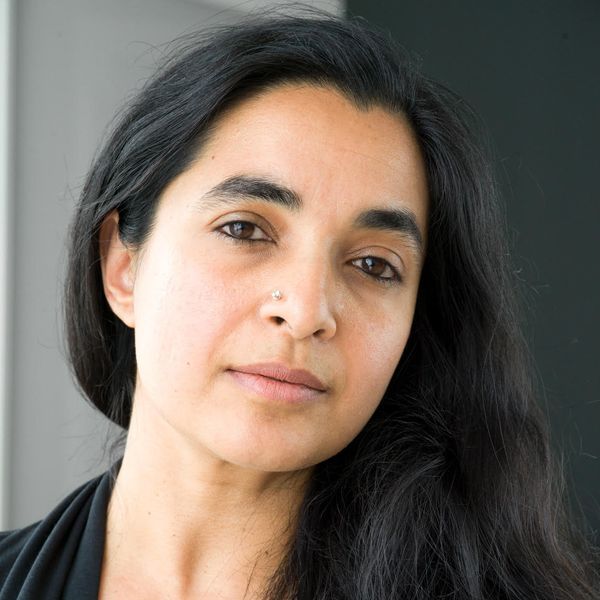

Ashwini Bhat, an artist born in southern India, currently lives and works in California. She holds an M.A degree in literature and had an earlier career in classical Indian dance. She often introduces radical but somehow familiar forms to suggest complex interplay between the landscape, the human, and the non-human.
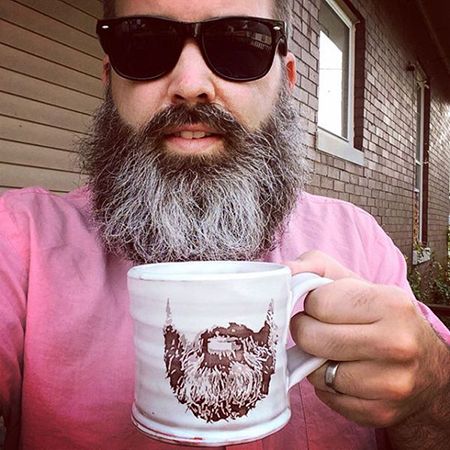

Brian Harper is an artist, professor, and Founder and Executive Director of Artaxis.org, a 501(c)(3) nonprofit organization that promotes the professional pursuits of artists in the field. He is an Associate Professor of Fine Art and Ceramics Program Head at Indiana University Southeast. His artwork has been exhibited in over 80 national and international exhibitions.


Craig Hartenberger (b.1990) is an artist who uses clay as his primary sculptural medium. Hartenberger’s work has been exhibited in a variety of exhibitions in USA, Mexico, Denmark, Taiwan, and Australia as well as others. Hartenberger was an assistant to Nina Hole and now serves as the US representative for her estate.
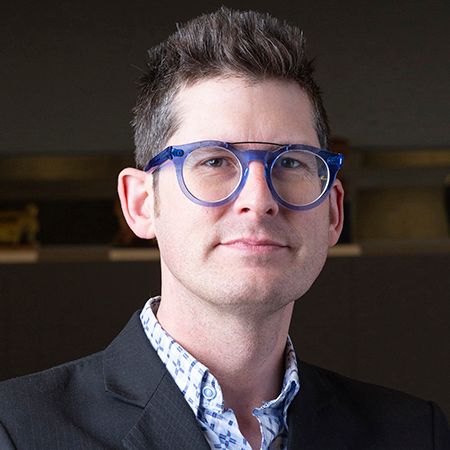

Writer, curator, and educator Garth Johnson is the Paul Phillips and Sharon Sullivan Curator of Ceramics at the Everson Museum of Art in Syracuse, New York. Johnson previously served as curator at the ASU Art Museum Ceramics Research Center in Tempe, Arizona and at the Clay Studio in Philadelphia.
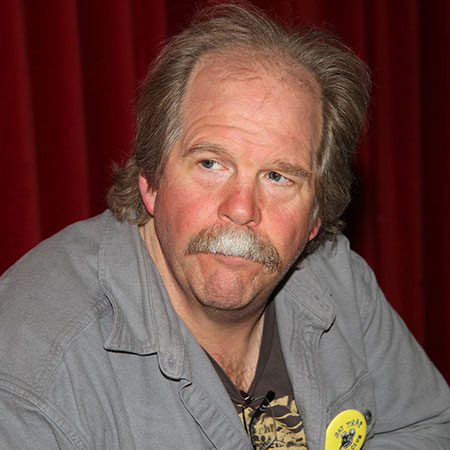

Josh DeWeese is a Ceramics Professor at Montana State University in Bozeman and currently serving as Interim Director for the School of Art. He’s the former Director of the Archie Bray Foundation in Helena, Montana. DeWeese has exhibited and taught internationally and his work is included in many collections around the world.


Mo Dickens has been a gallery assistant with Belger Arts since 2004 and in 2010 was named by Pitch magazine as "KC's Most Humble Servant of the Arts." Mo was a recipient of a Rocket Grant, funded by the Andy Warhol Foundation, in 2015 and was an Artist-In-Residence at the Charlotte Street Foundation 2017-18. Mo has given tours of the Belger Collection to visitors from the Metropolitan Museum of Art, the Boston Museum of Fine Art, the Phillips Collection and many other major and smaller arts venues across the country. His passion is sharing stories of art and artists in Kansas City with pretty much anyone who will listen.


Shoji Satake is the area head of ceramics at West Virginia University and Coordinator of WVU’s ceramics in China program. Shoji has served for NCECA on various capacities and he will serve as President of the NCECA board (2023-25). Shoji has conducted workshops, given lectures and exhibited nationally and internationally.
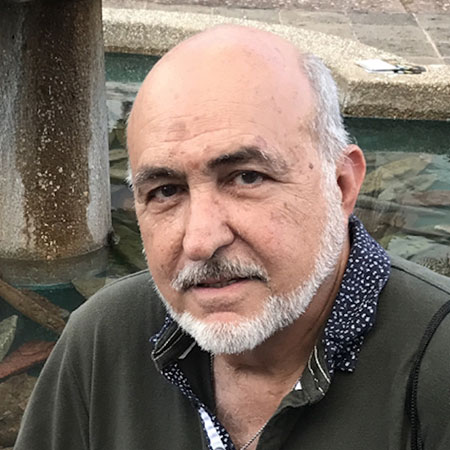

Jaime Suarez, ceramist. One of the principal promoters of the medium in Puerto Rico, co-founding key institutions that fueled its development and producing a body of work including monumental commissions in clay. Collaborates with numerous cultural institutions and serves on the Board of Cerf+ -the Artist Safety Net.
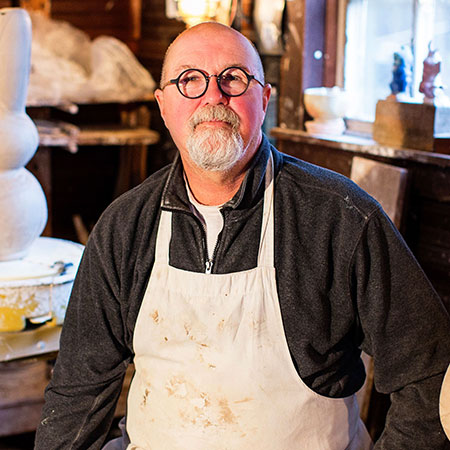

Jay Lacouture has been making pottery for over forty-five years. He was named Professor Emeritus of Art at Salve Regina University in Newport, RI after serving the Art Department for thirty-eight years. He is a Fellow and former President of the National Council on Education for the Ceramic Arts (NCECA) and served on the Board of Directors for the Studio Potter Organization. He is a past recipient of a RISCA Fellowship in Crafts. He has been an artist in residence in Kamioka, Japan, Jingdezhen, China and at the Archie Bray Foundation in Helena, MT. His distinctive porcelain vessels reference the historic iconography of pottery form as both a utilitarian and ceremonial object. His pottery has been exhibited and published in the US, Australia, China and Japan. He is a graduate of West Virginia University (MFA) and Rhode Island College (BA). He lives and works at the Carolina Pottery in Carolina, RI where he fires his work in a two-chamber wood/soda kiln.
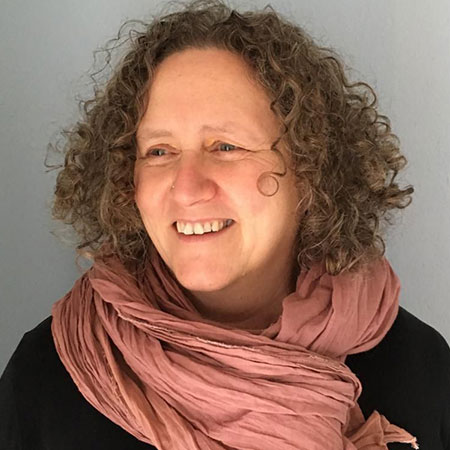

Currently I divide my time between the studio, lecturing at the Galway Mayo Institute of Technology, as editor and designer of the Ceramics Ireland magazine, which is produced bi-annually and committee member of the organisation. In February 2019, I published a book celebrating Ceramics Ireland’s 40th Anniversary – Ceramics Ireland – Celebrating makers and Community.
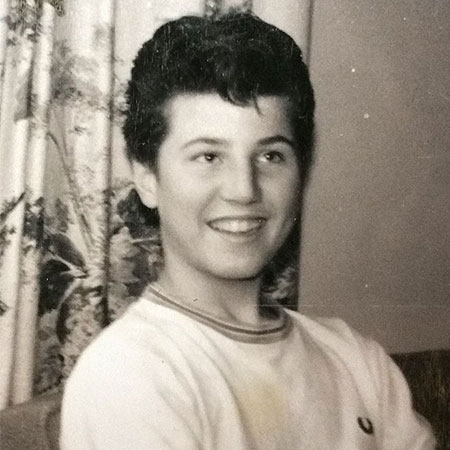

Professor Emeritus, University of Southern Indiana- 2011
Founder/Director- The New Harmony Clay Project and Residency-2015
Board of Directors, NCECA-Past-President, Director of Exhibitions—NCECA -1980-1988
Board of Trustees, the Watershed Ceramics Center, 2019-Present
Board of Trustees, American Crafts Council- 1988-1992
Board of Directors, New Harmony Gallery of Contemporary Art-
Founding Partner, Expressions of Culture, Producers of SOFA Art Expos- 1993-
Founding Investor, The Art Fair Company, producers of Art Chicago


Eugenia Frith Meltzer returned to Alfred to build her own clay studio after she retired from teaching strings in Illinois. She now also lives in St. Paul, MN (closer to her married children) and continues to work in clay, driving back to Alfred to fire in her soda kiln.
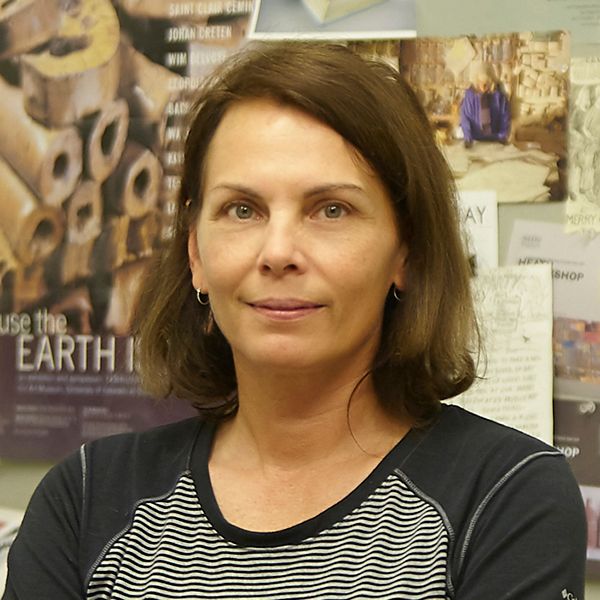

Lesley Baker is an Associate Professor at RISD and has also taught at the Herron School of Art and Design, UC Berkeley, and CCA. She has participated in numerous artist residencies, including the Archie Bray Foundation, Kohler Arts/Industry, Guldagergaard in Denmark, and the Pottery Workshop in Jingdezhen, China.
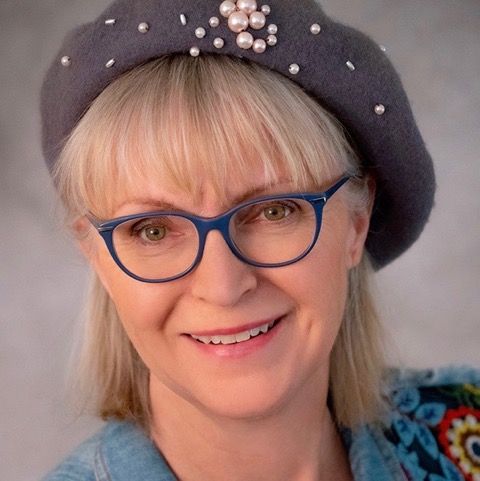

Vernita met John Mason at Hunter College, in New York, when she enrolled in his class. In the early 80’s they moved to Los Angeles for John to return to working in clay. She is a retired teacher and works in Ceramics, Photography and Video. They have two children.


Description
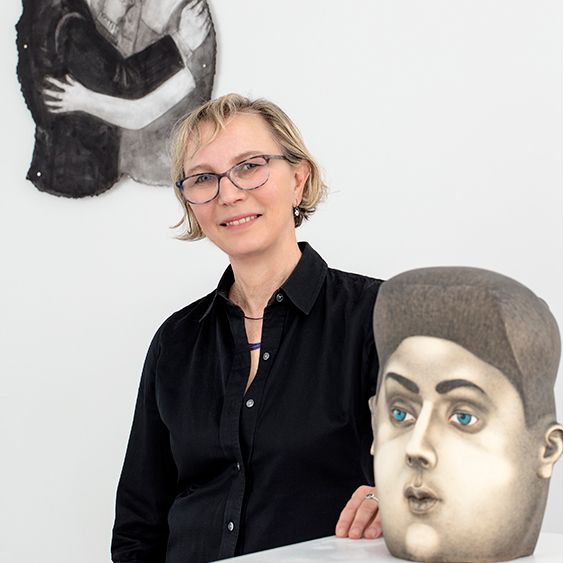

Leslie Ferrin is the director of Ferrin Contemporary (North Adams, MA) and Project Art (Cummington, MA). Specializing in contemporary ceramic art 1950 - present, Ferrin is an internationally respected curator focused on ceramics working in support of artists, private collectors and in partnership with galleries and museums throughout the USA and internationally. As director of the gallery program, Ferrin organizes and presents solo exhibitions, manages touring creative projects, and develops legacy ceramic collections for sale and gifts on behalf of artists and private collectors. In addition to the gallery, Ferrin directs Project Art, a live/work international ceramic artist residency where there are ongoing, short, and long-term projects based in ceramic art. During the COVID19 shutdown of public spaces in 2020, Ferrin and her team developed a three-month series of virtual programs focused on Nature/Nurture exploring the role of gender on artistic practice among the diverse group of twelve women ceramic artists in the exhibition. As host of the podcast, I’m Speaking/I’m Listening, Ferrin draws upon forty years of experience and a wide network of artists and curators as they consider the role of gender and identity in their professional practices and working in the field of ceramics.
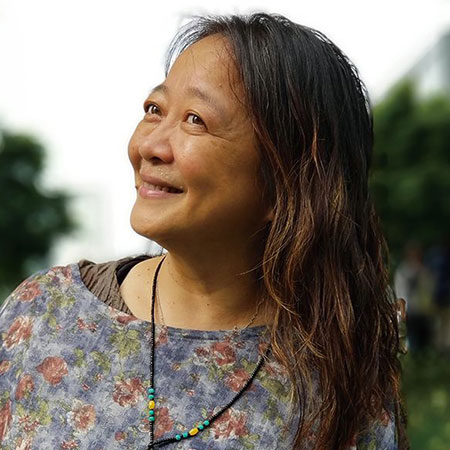

Sin-Ying Ho received her BFA from Nova Scotia College of Art and Design in 1997 and her MFA from Louisiana State University in 2001. Currently, Ho is an associate professor at Queens College, City University of New York teaching ceramics art. Ho has taught and run workshops, lectures and exhibit world widely.
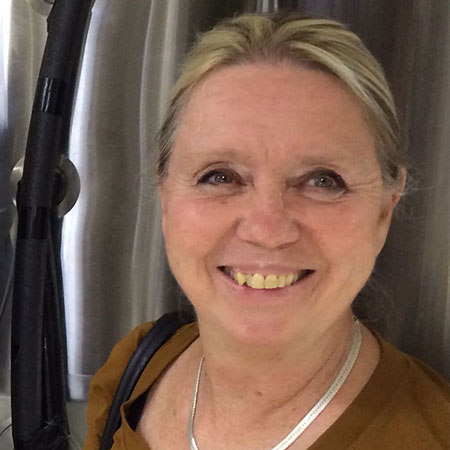

Janna is an installation artist/teacher and community activist. She works to broaden perspective and offer alternative thinking. While teaching at MassArt in Boston, she has developed courses which incorporate history, design and technical instruction along with cultural, environmental, and social issues.
 1:00pm-2:30pm
1:00pm-2:30pm
Mas’Queer’Raid is an ongoing body of ceramic work that utilize traditional folklore and carnival characters to navigate contemporary issues situated in the Caribbean and wider diaspora populations.

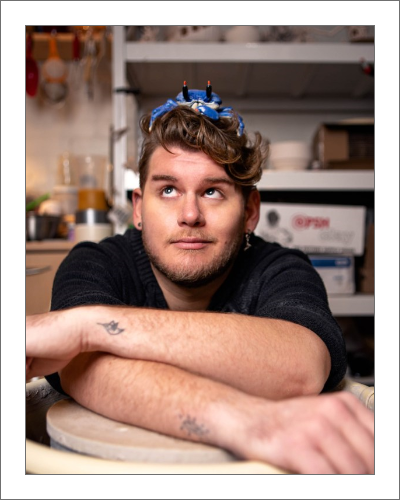
Trinbagonian Artist, Proud Caribbean Queer, I use these words to describe some measure of the intersectionality from which my work erupts. By utilizing Folklore and Carnival characters from my heritage I seek to navigate tensions of power, sexuality, race, and the diversity of complexities within the Caribbean.

How working within the rich ceramic traditions of other cultures can provide the starting functional potter a proper and more whole sense of form and lead to non derivative, original work.

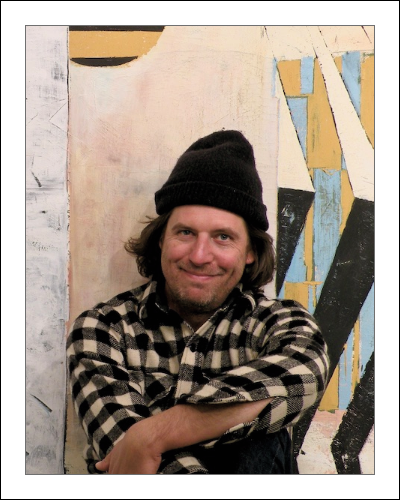
Jason received his ceramic education through working under other potters as an assistant or apprentice in Japan, England and in the US. He is currently a resident artist at Penland School of Craft.

Yoo aims to disrupt binary classifications of people through figurative sculpture and installation. Born in Daejon, South Korea he studied graphic for nine years in Seoul before moving to the US at the age of 32. Yoo studied ceramics at Konkuk University and Alfred University (MFA ’19).

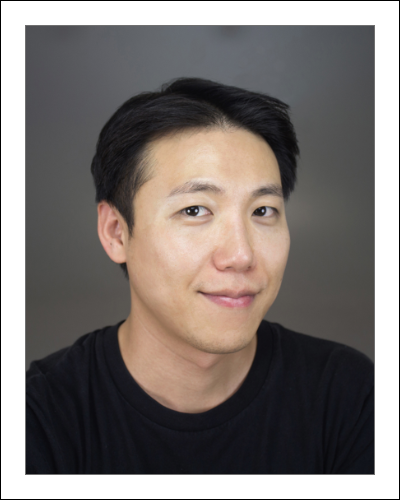
Jinsik Yoo aims to disrupt binary classifications of people through figurative sculpture and installation. Born in Daejon, South Korea he studied graphic for nine years in Seoul before moving to the US at the age of 32. Yoo studied ceramics at Konkuk University and Alfred University (MFA ’19).

Shiyuan’s work is an interpretation of the scientific phenomena to highlight the beauty and fragility, rhythm and harmony of micro life forms. The intricate structures are woven into organic forms, combing with her sensations to reflect her understanding of nature, the delicacy of life itself and her own cultural heritage.

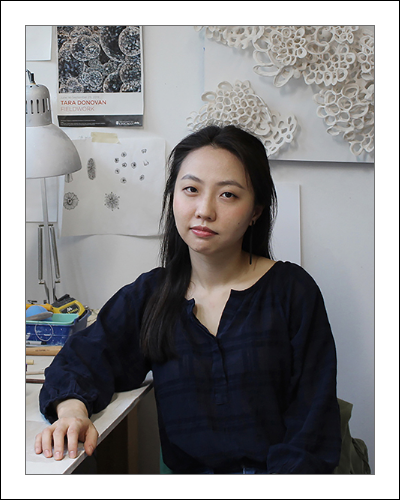
Shiyuan Xu is originally from Hangzhou, China. Shiyuan received a BA (2012) from China Academy of Art and an MFA (2016) from Arizona State University. Shiyuan is a 2017 Ceramics Monthly Emerging Artist and currently she is the resident artist at Lillstreet Art Center, Chicago, IL.

The mixed and mashed-up historical milieu of my ceramic practice serves as the backdrop for a conversation regarding the relationship between mental health, creativity, and productivity. Using elements of the Karatsu tradition as an aesthetic lens, this presentation focuses on the practice and process of one African American potter.

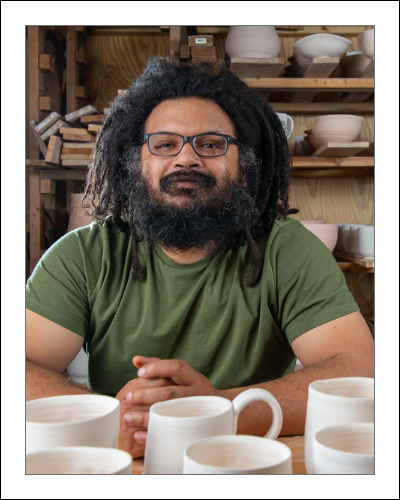
Dom is an biracial potter born in rural Wisconsin and raised in the Twin Cities. Dom earned an M.F.A. in ceramic sculpture from the University of Missouri-Columbia in 2010. He wood fires with Glencoe Ceramics and currently serves as instructor of Fine Arts at Riverland Community College in Austin, MN.

As a newcomer artist, Han will share how her two very different experiences from her two homes – South Korea where she studied Korean traditional ceramics and Canada where she was encouraged to be more contemporary – evolved her work into something she did not expect it to become.

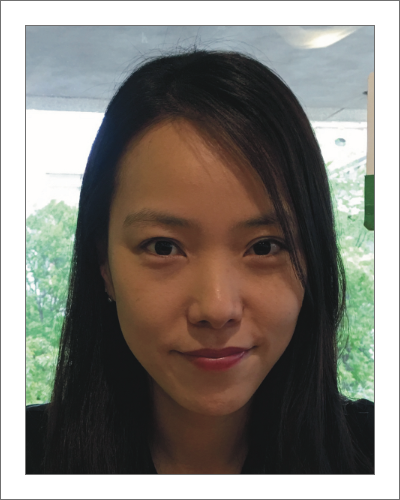
Grace Han is a ceramic artist originally trained in South Korea. She received her BFA from Dankook University where she specialized in traditional Korean ceramic techniques and skills. She received her MFA from University of Manitoba in 2016 and has been pursuing her career as a ceramic artist in Canada.
 2:45pm-3:45pm
2:45pm-3:45pm
"Clay is the common denominator for thousands of N.C.E.C.A. members. The paths that led every one of us to become this N.C.E.C.A. statistic have their own personal journey to share. This is the story of my journey."

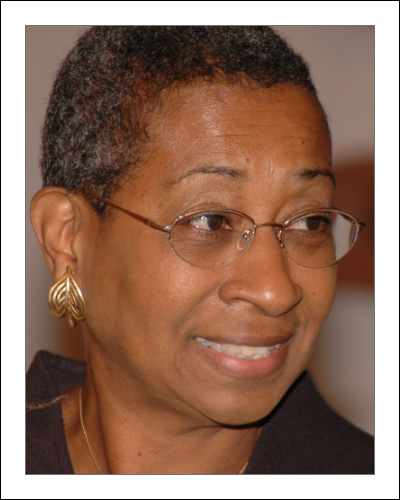
From an early age, Winnie Owens-Hart’s parents stressed the value of education above all else, bestowing her with the sense that she could begin to discover worlds within the pages of books. Today she is recognized as one of the ceramic art community’s most progressively expansive polymaths: educator, artist, filmmaker, author, and critical thinker in matters of clay, art and culture. She taught at Howard University for more than 37 years and has conducted research, exhibited, and presented lectures internationally. She has worked with women in a pottery village in Ghana for more than a decade. As both a published author and curator, Owens-Hart has curated exhibitions primarily focused on contemporary African American artists and has also produced documentary films, including Style & Technique-Four Pottery Villages and The Traditional Potters of Ghana-The Women of Kuli. Over more than four decades, her work has been exhibited nationally and internationally with work in the collections of the
 NA
NA
In an attempt to find my own voice within the wood firing practice, I have discovered inventive techniques to change the traditional and accepted perceptions of woodfired ceramics. This lecture will cover my journey of experimentation while highlighting ceramic artists who are adding new visual vocabulary to this historic process.

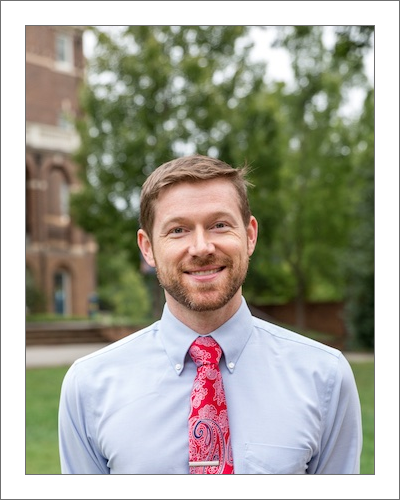
Shawn O’Connor received his MFA in Ceramics from Syracuse University in 2010. Since graduate school Shawn has continued to focus on making utilitarian wood fired vessels. Shawn is currently an Assistant Professor, teaching ceramics and sculpture, and Associate Director of Galleries and Museums at Sweet Briar College in Virginia.
 NA
NA
While exploring the village of Gu Cheng, China, I was stunned upon encountering potters using fast firing and post reduction, what globally is referred to as Japanese Raku. The region has practiced the technique for over 1000 years. This awareness has conjured up, questions, insights and an examination of our assumptions.
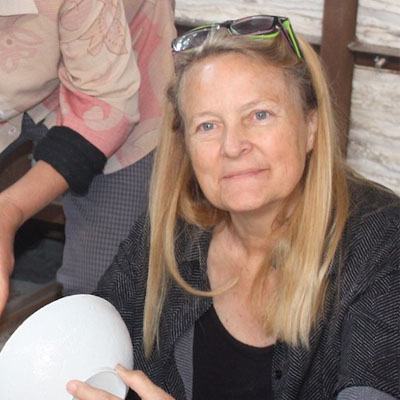

Coreen holds an MFA from the San Francisco Art Institute and BFA from the University of Colorado. She has been adjunct lecturer at UC Berkeley, Nanjing University of the Arts, China; Jingdezhen Ceramics Institute, China. She has given numerous workshops in the US, India, Malta, Italy, and China.


 Listen
Listen
